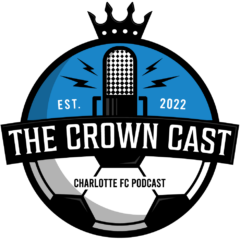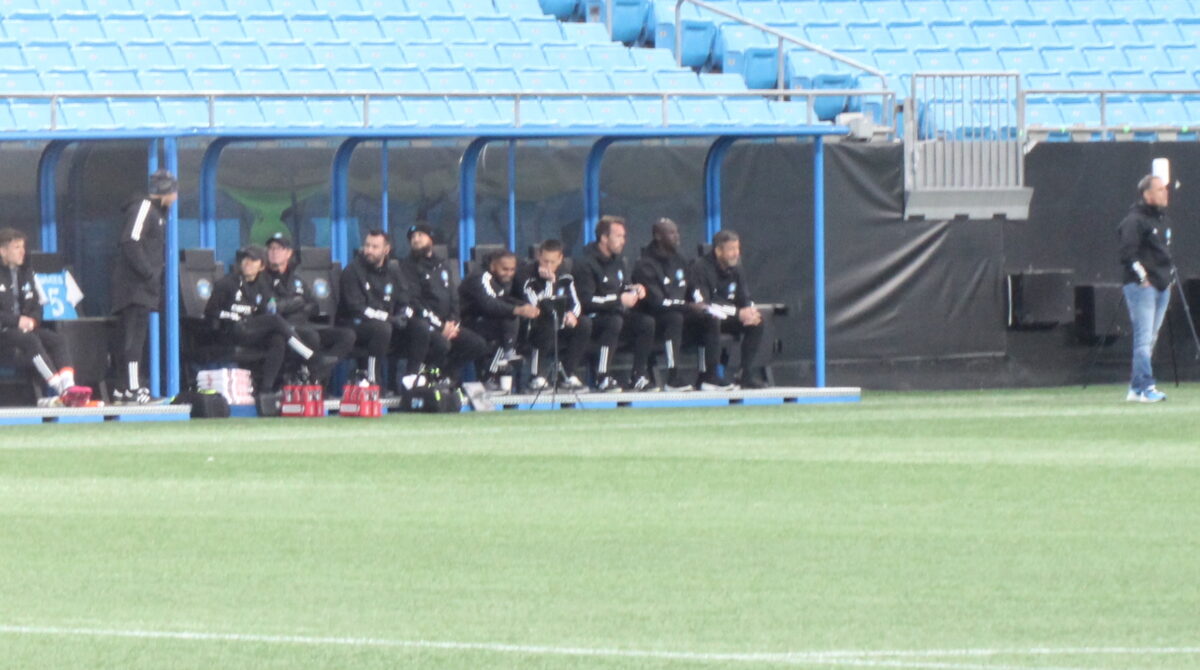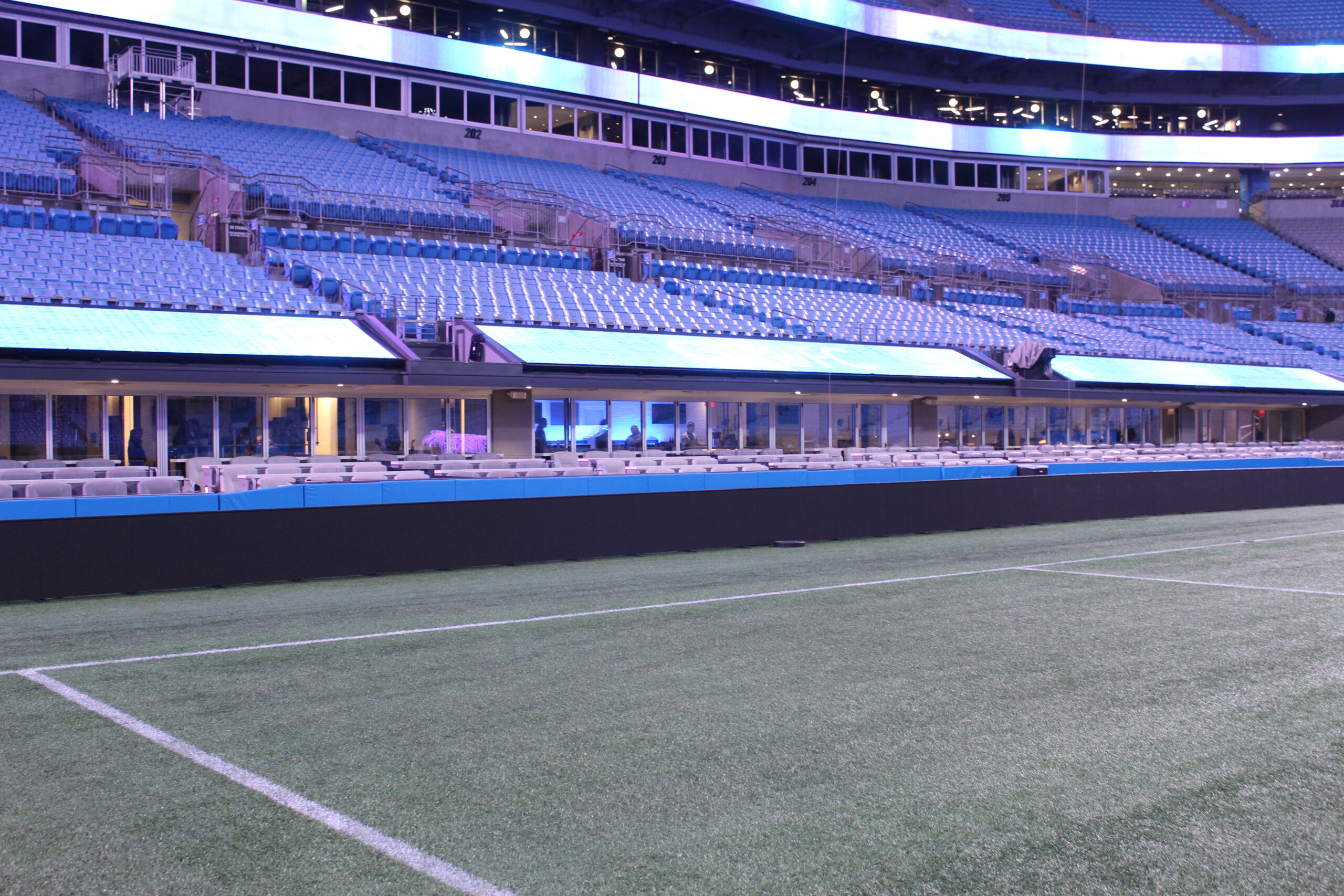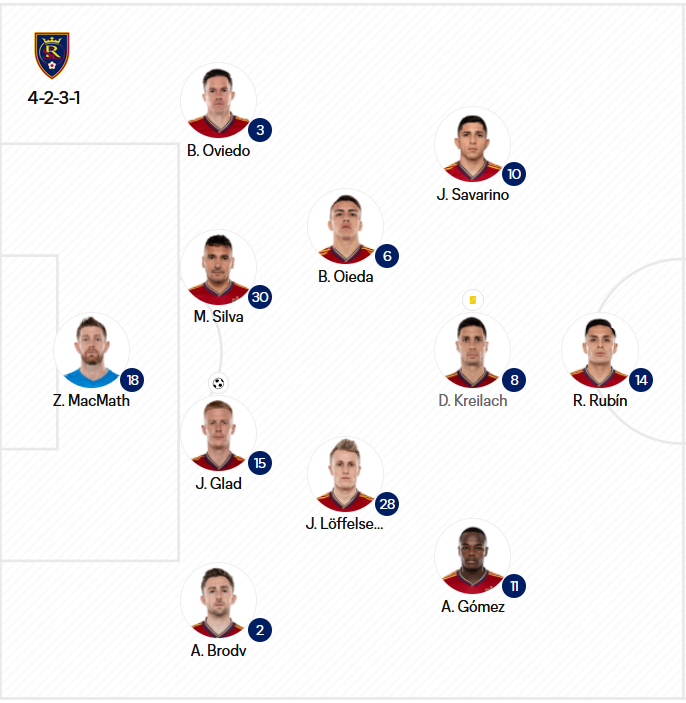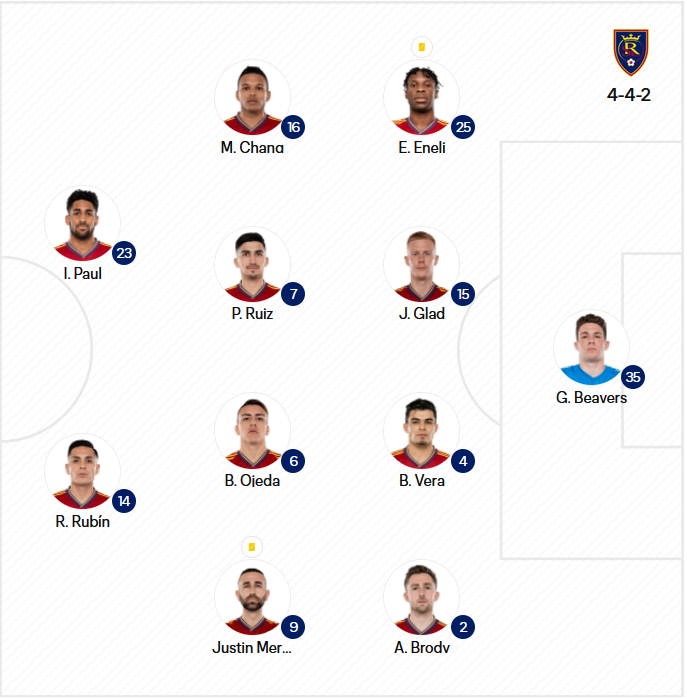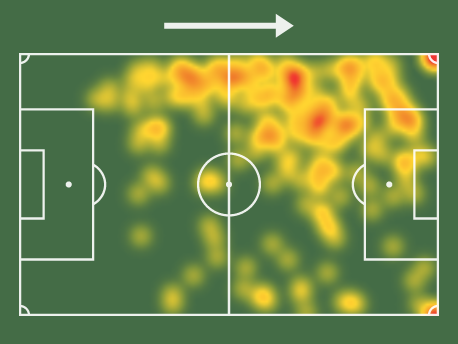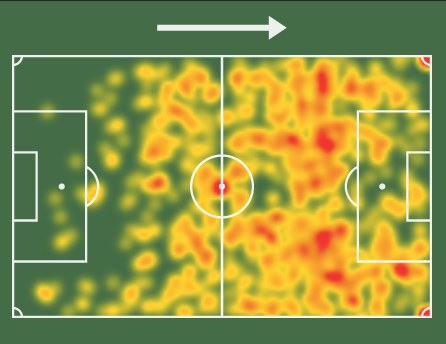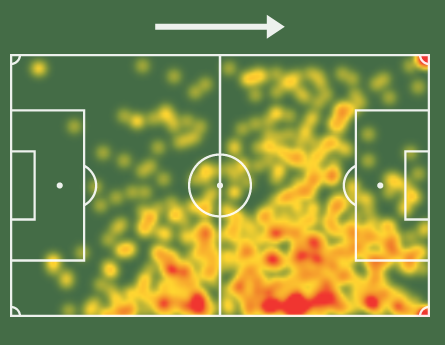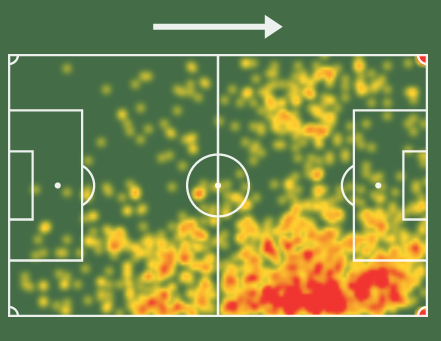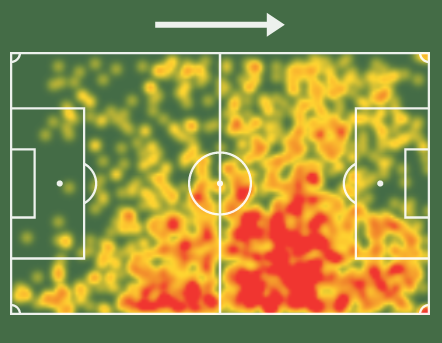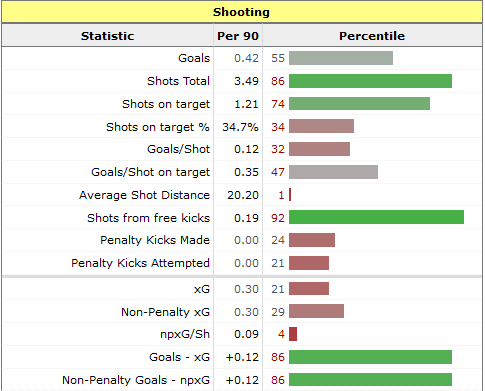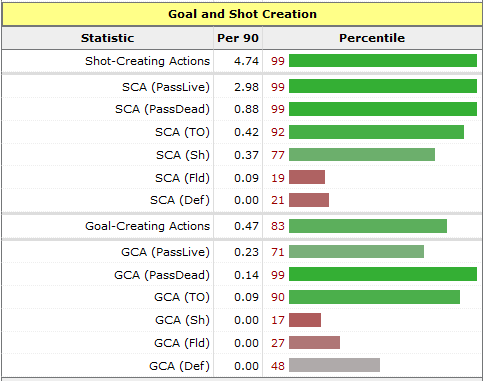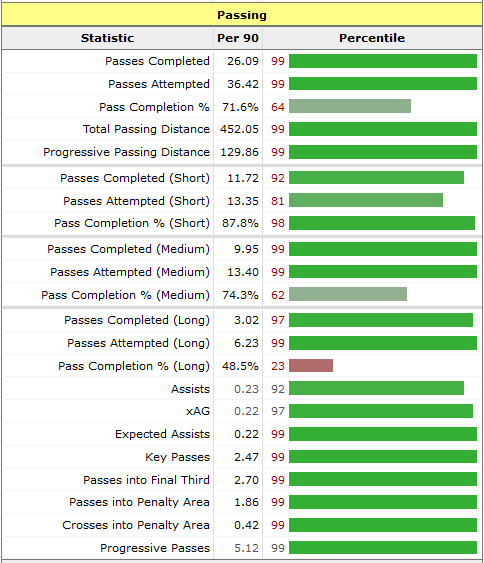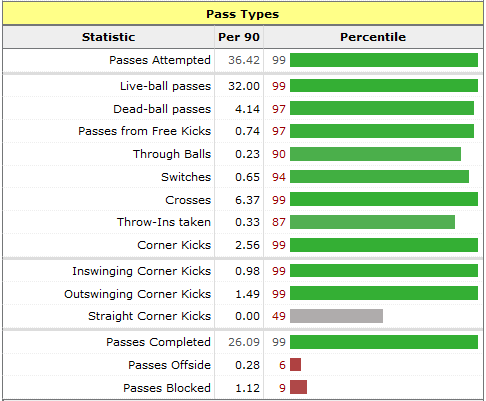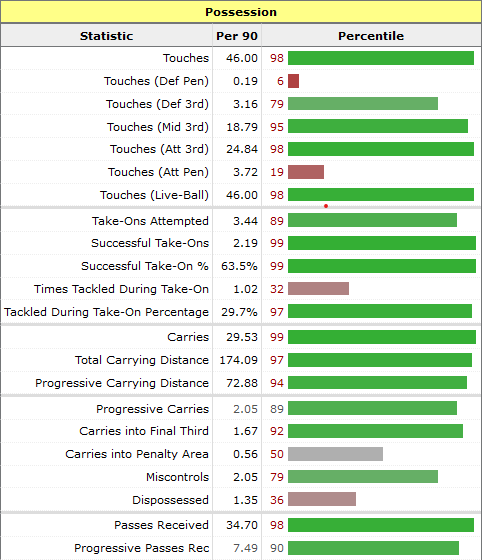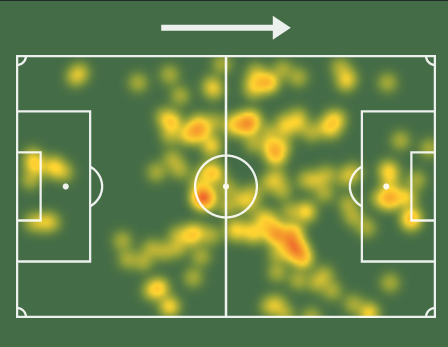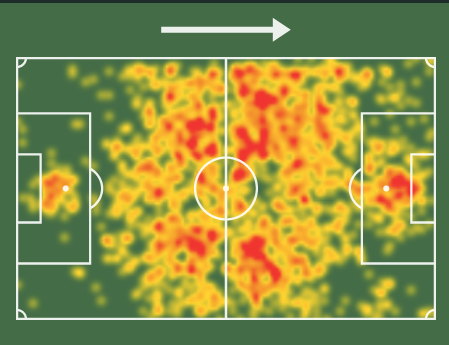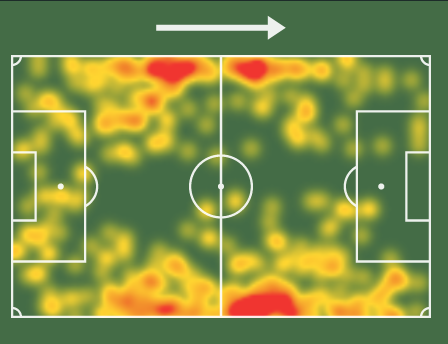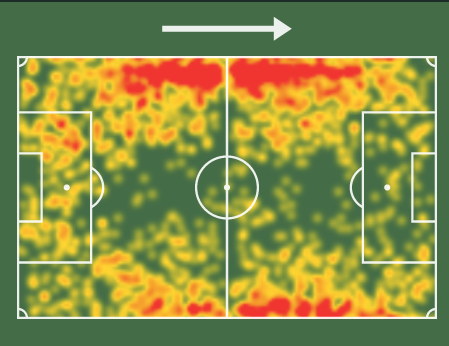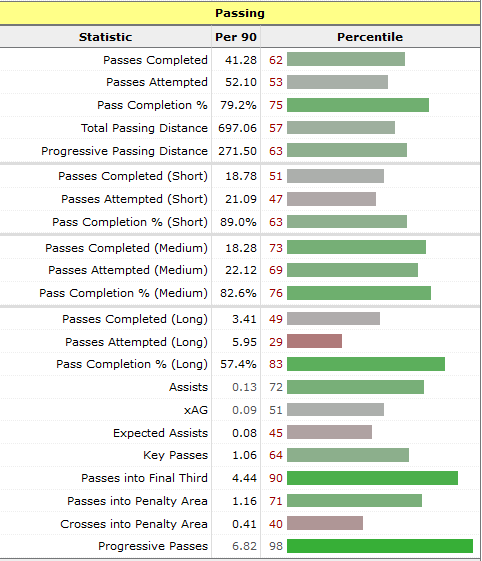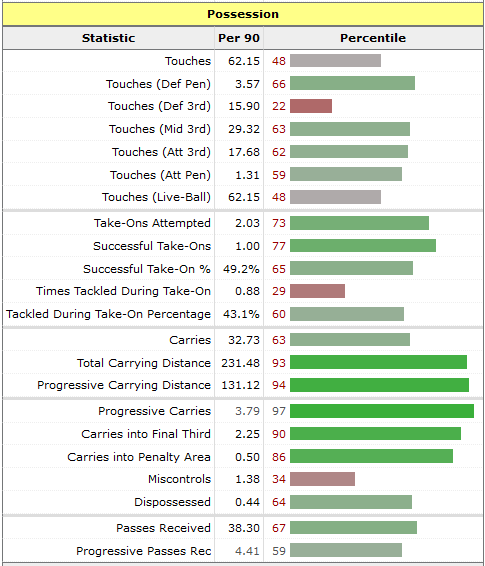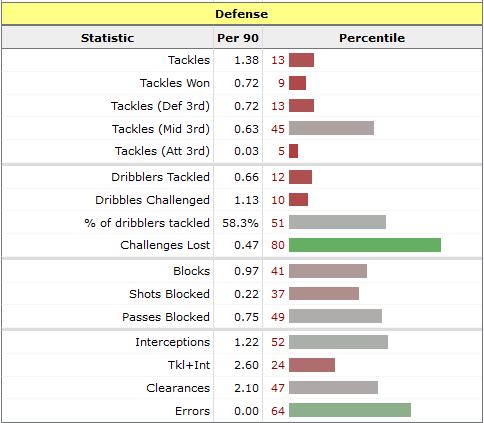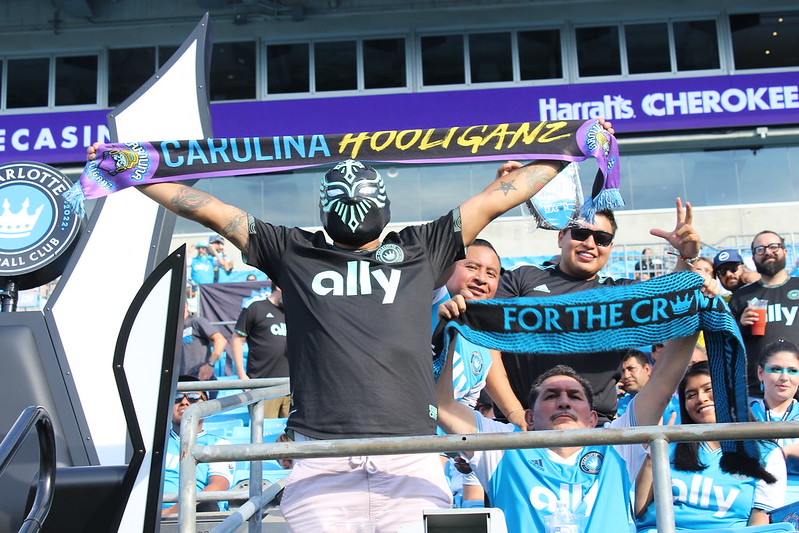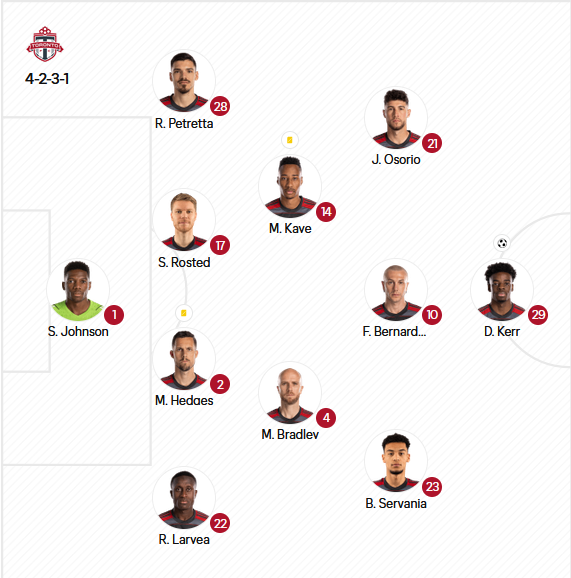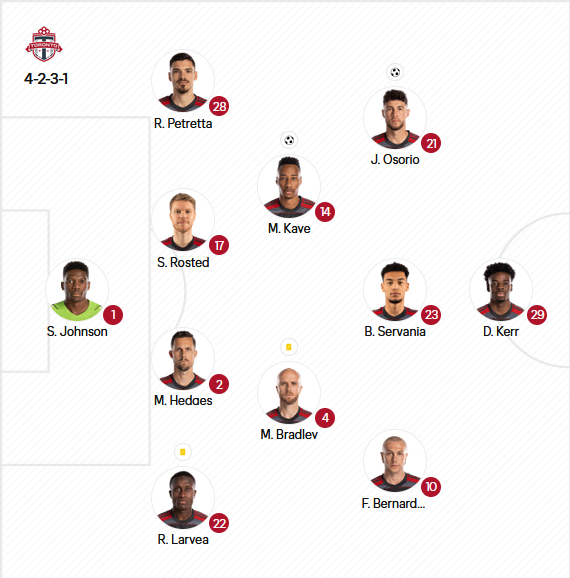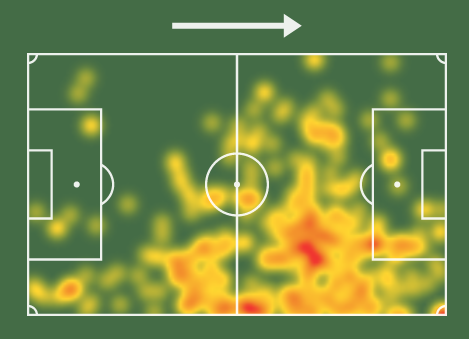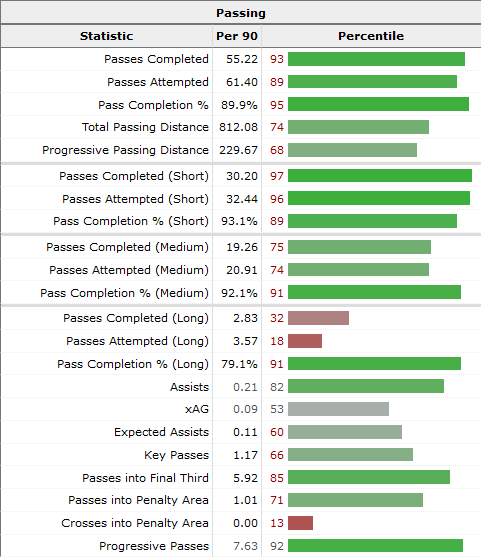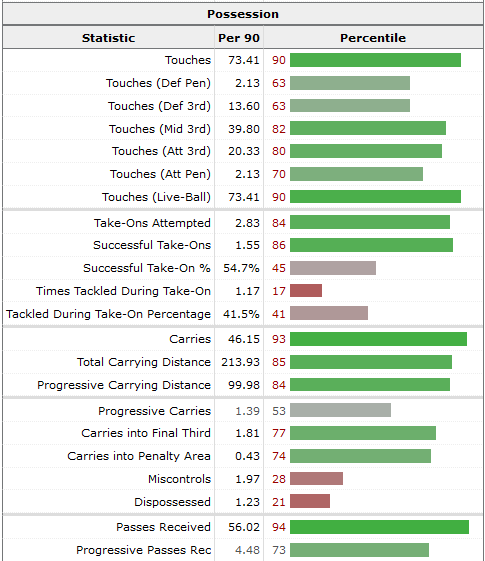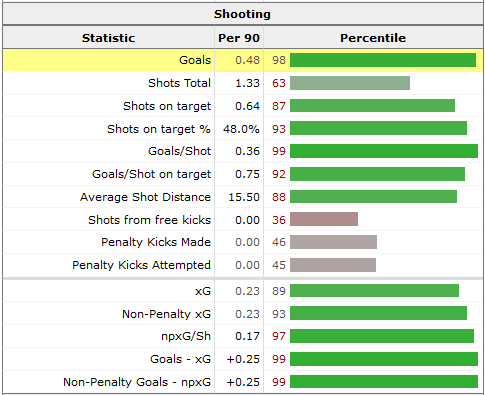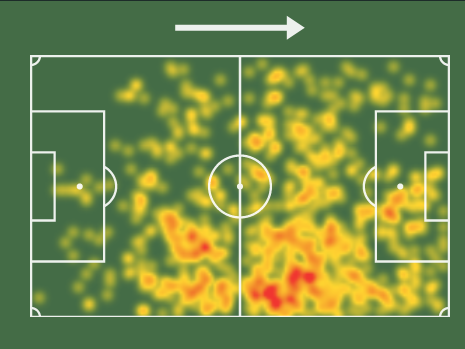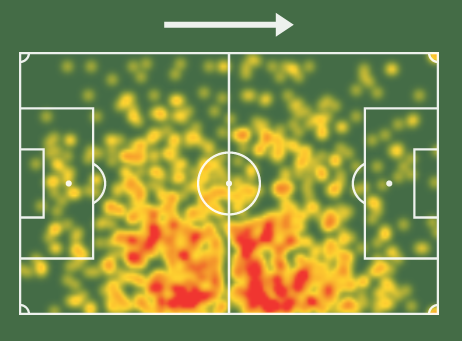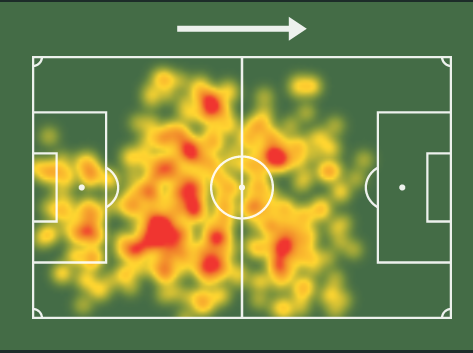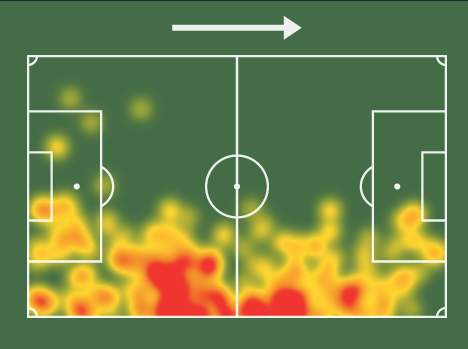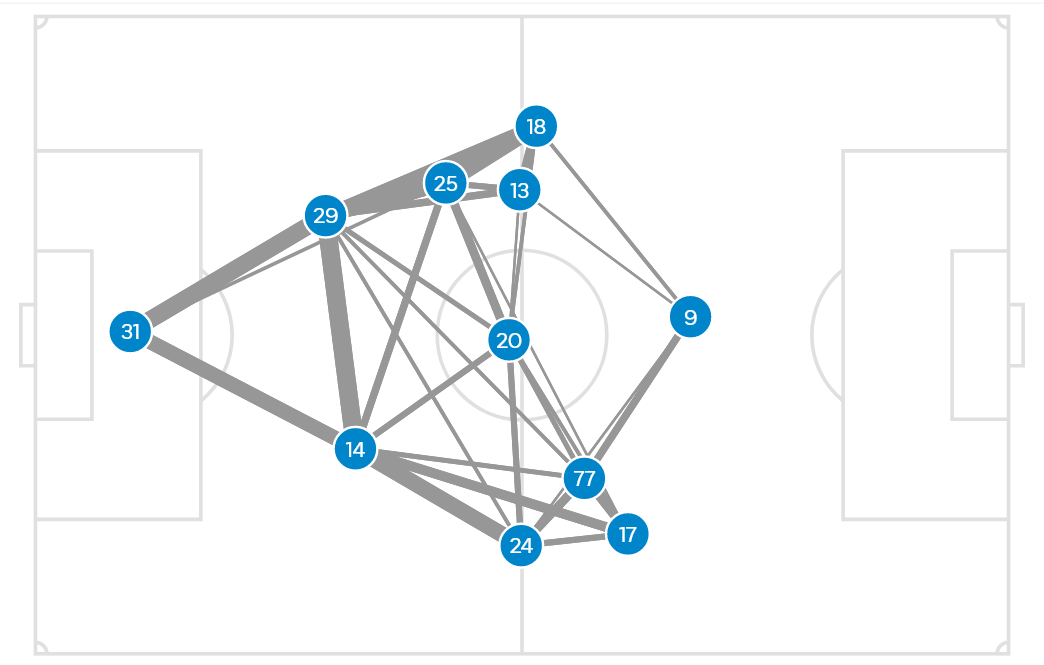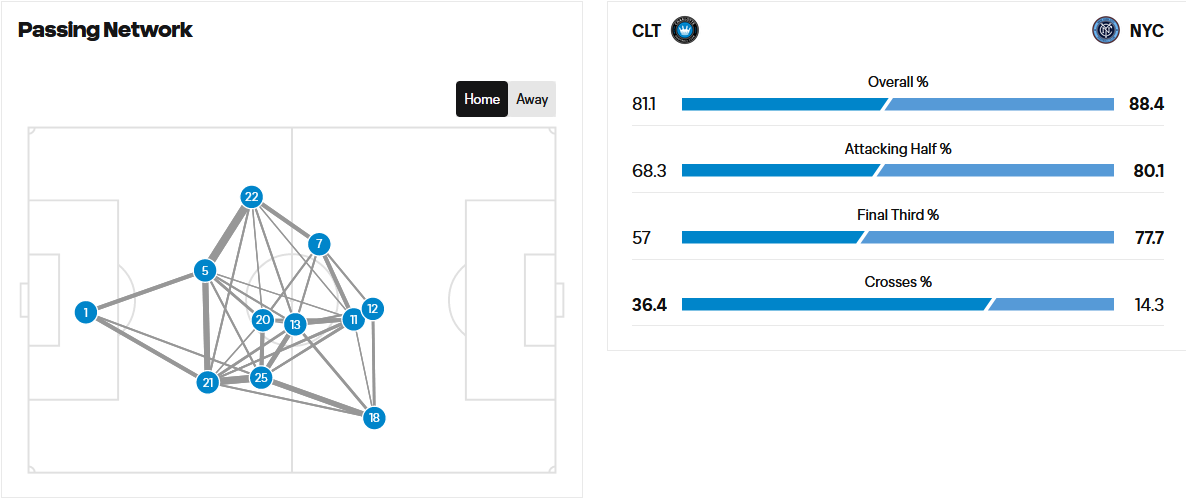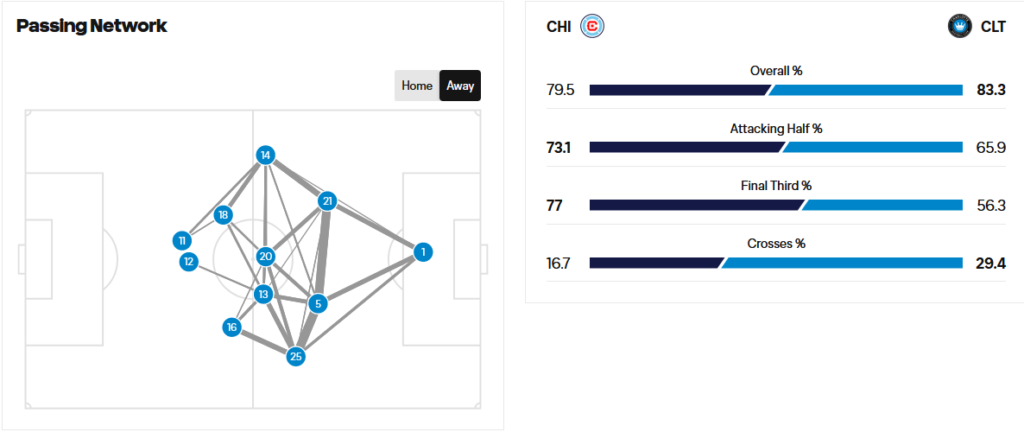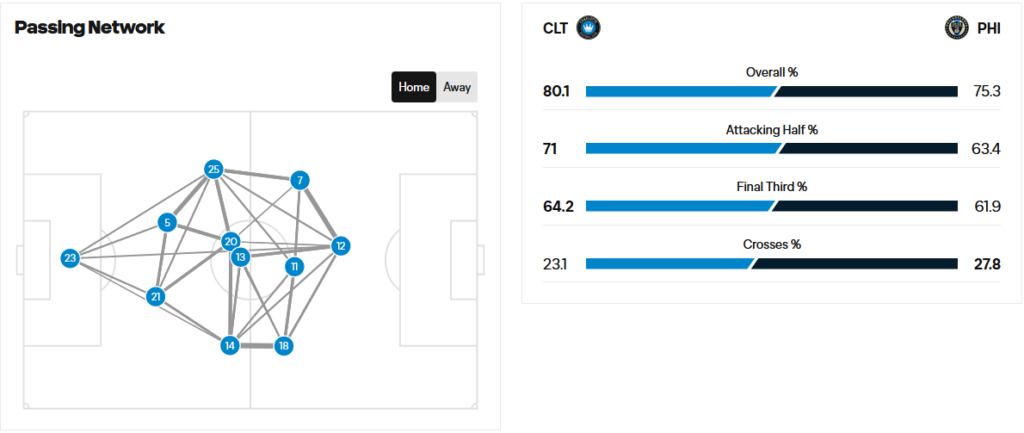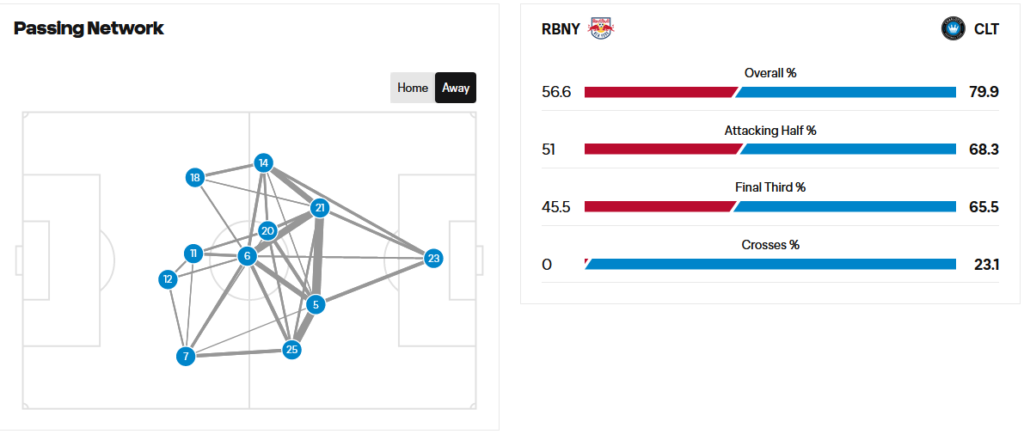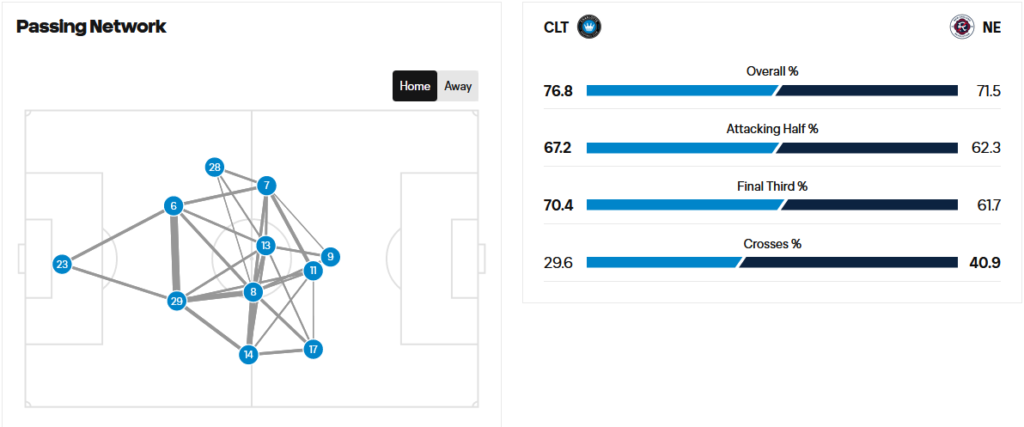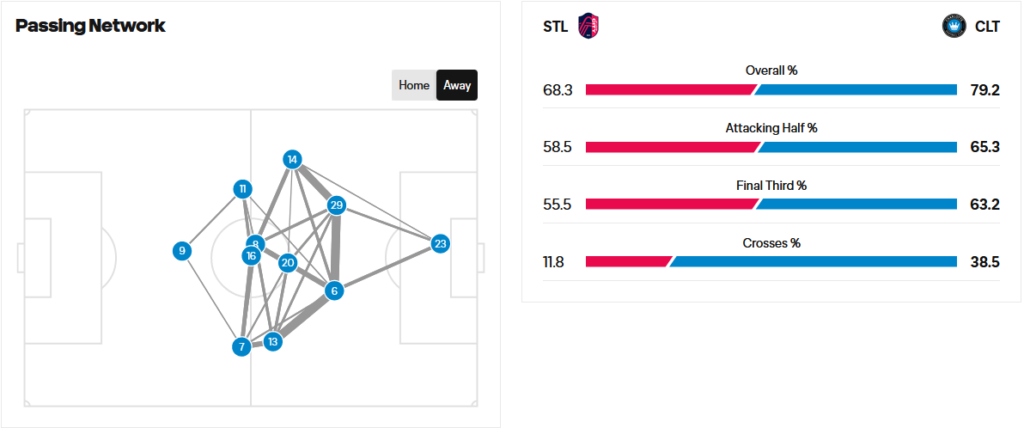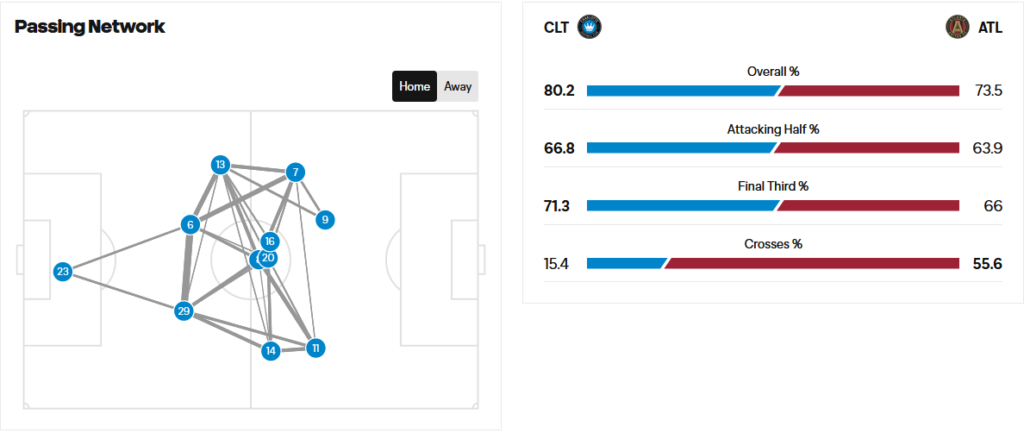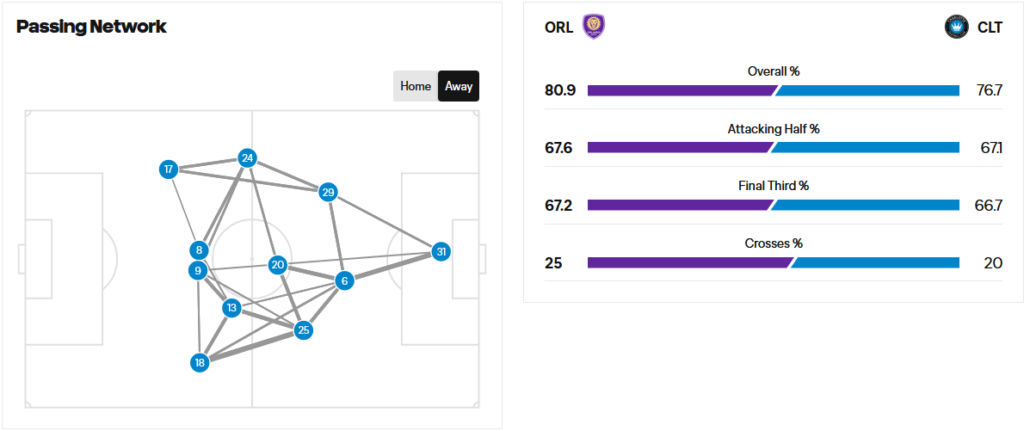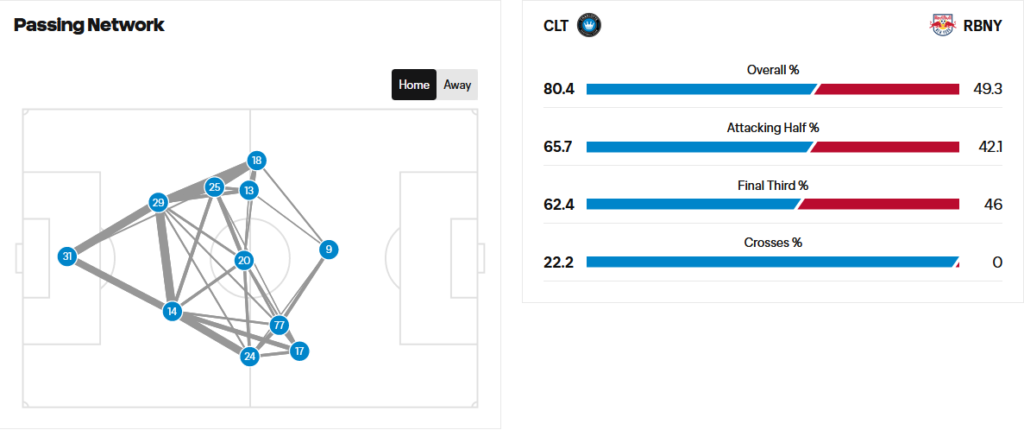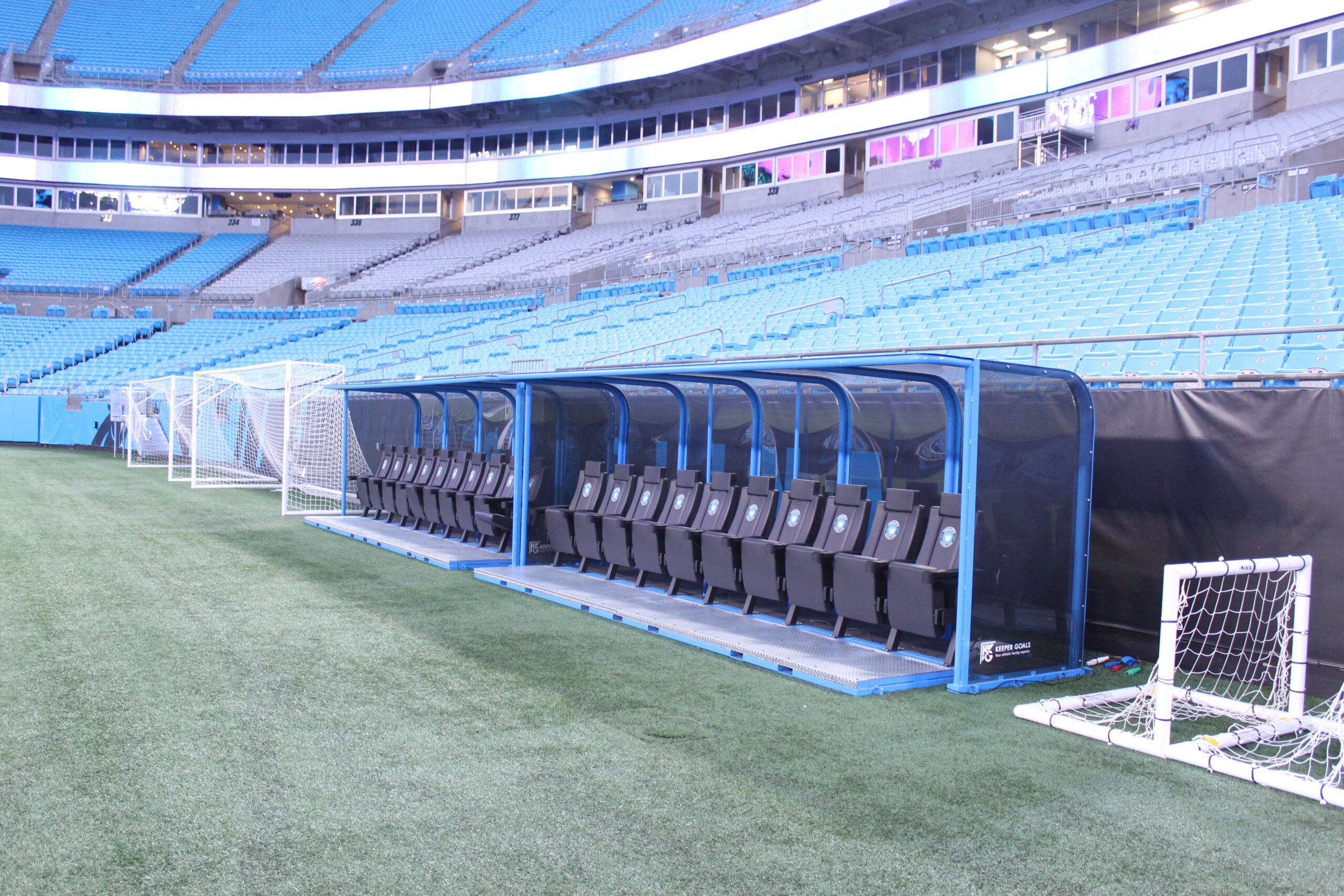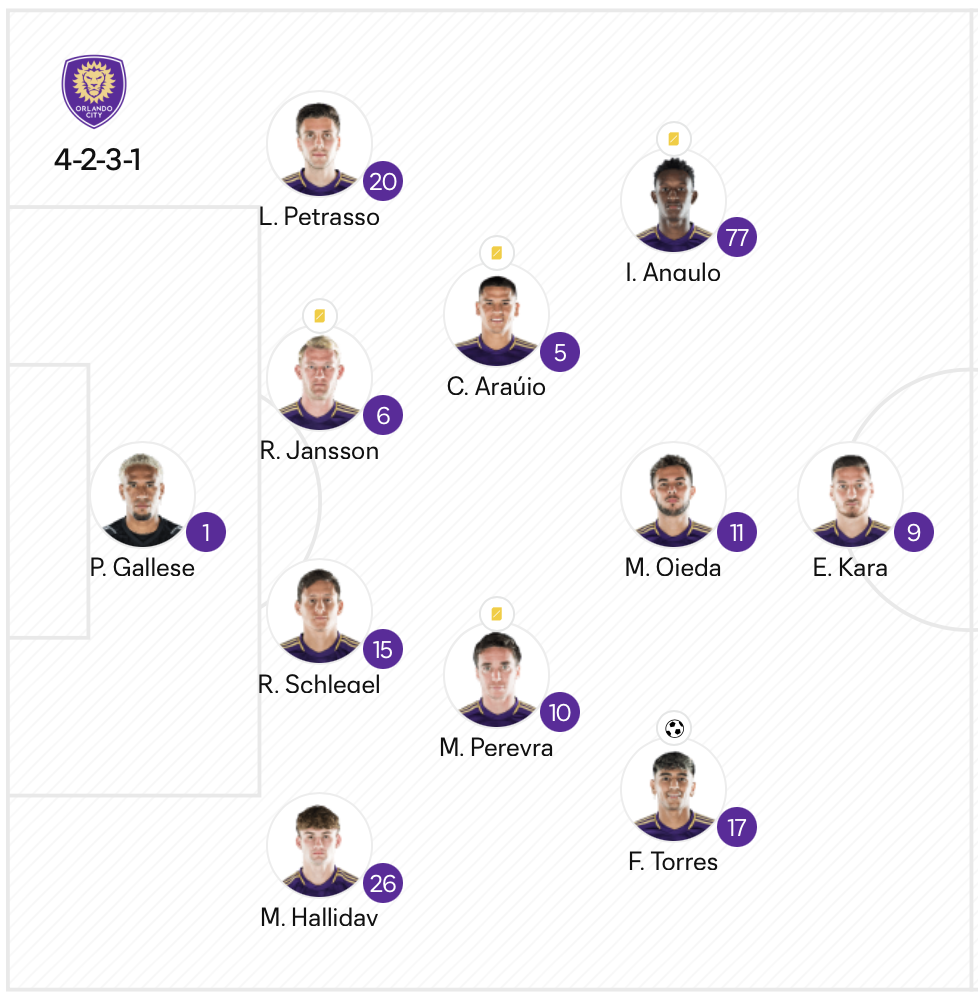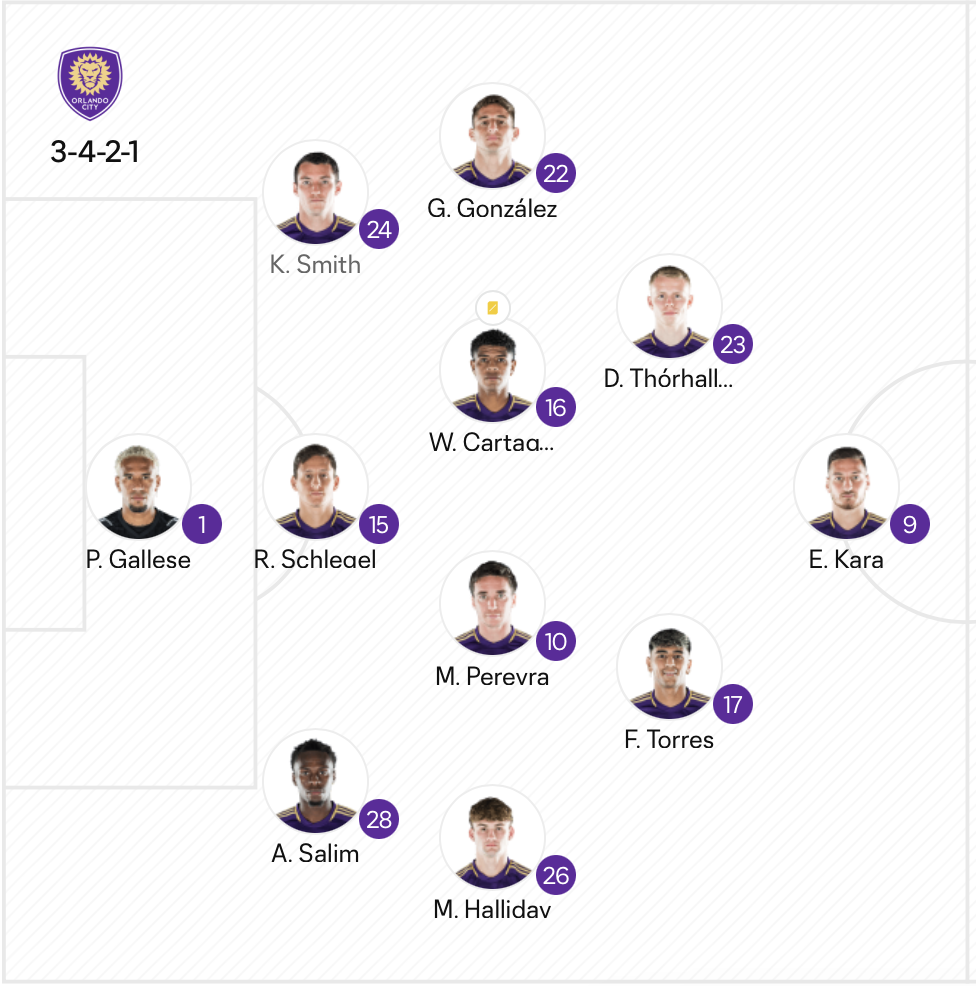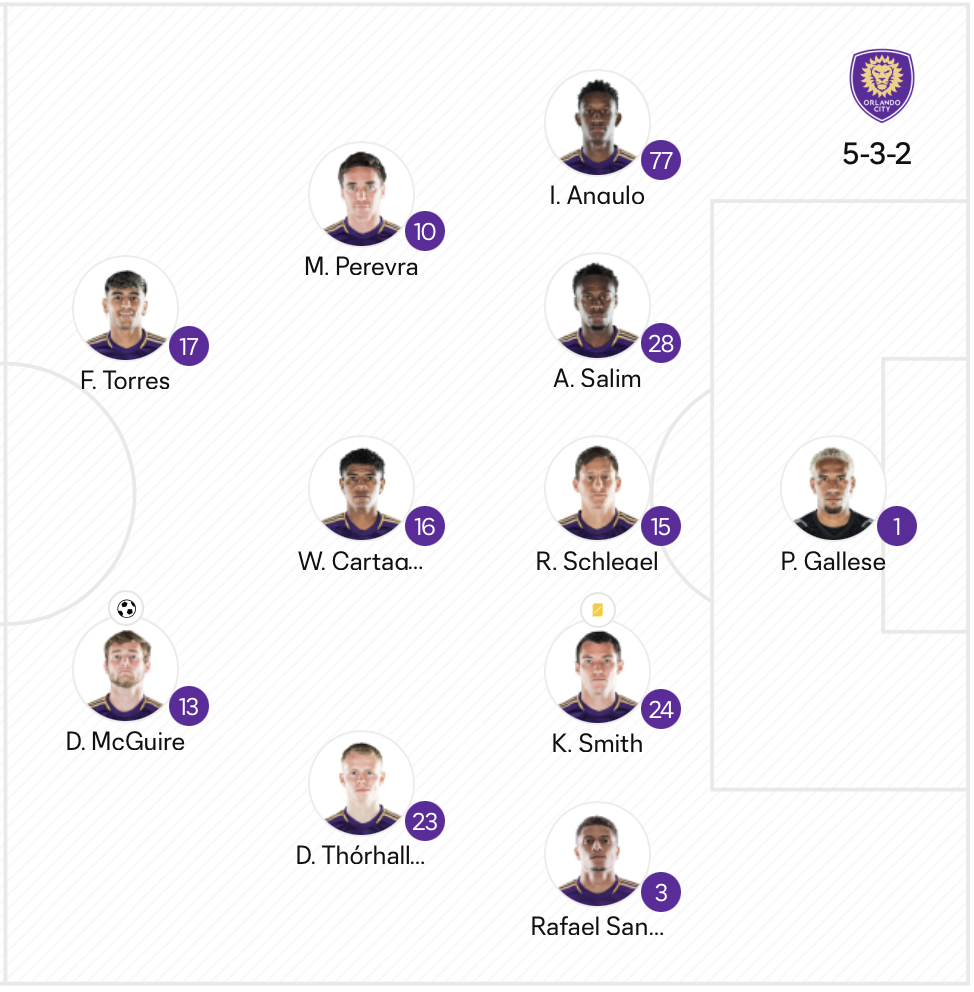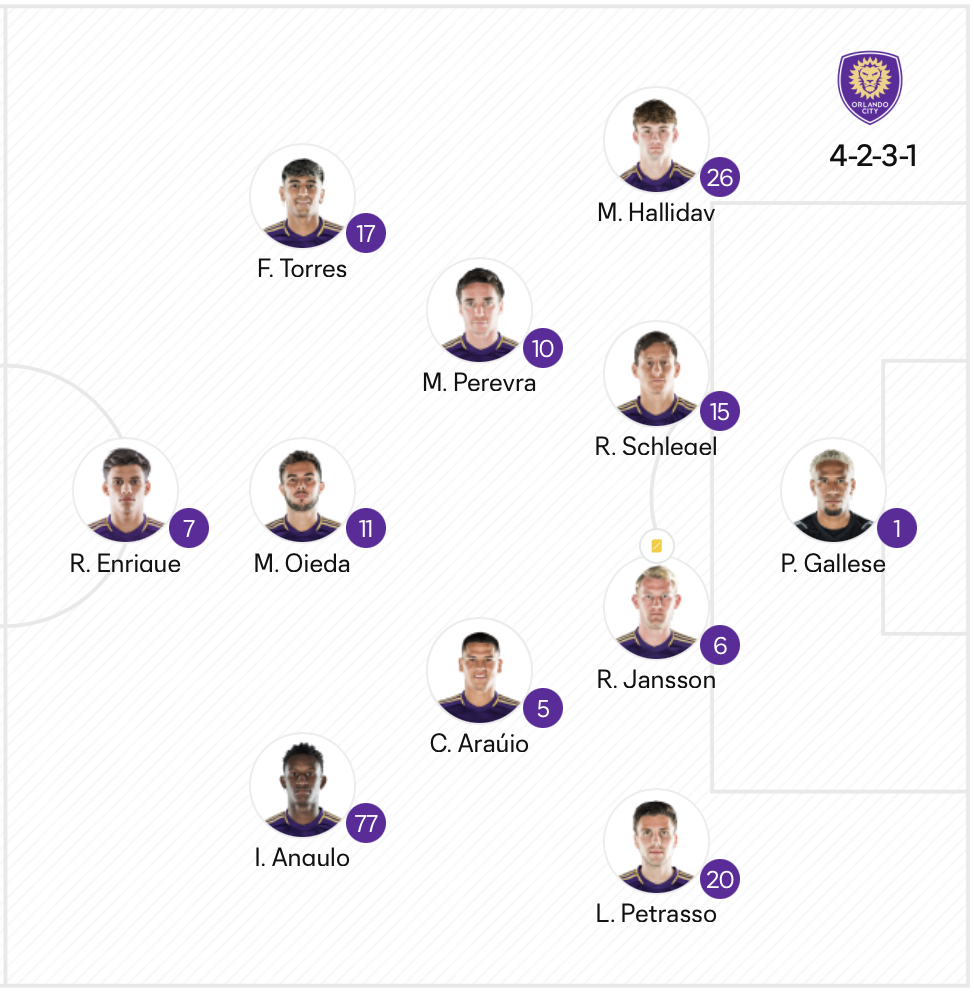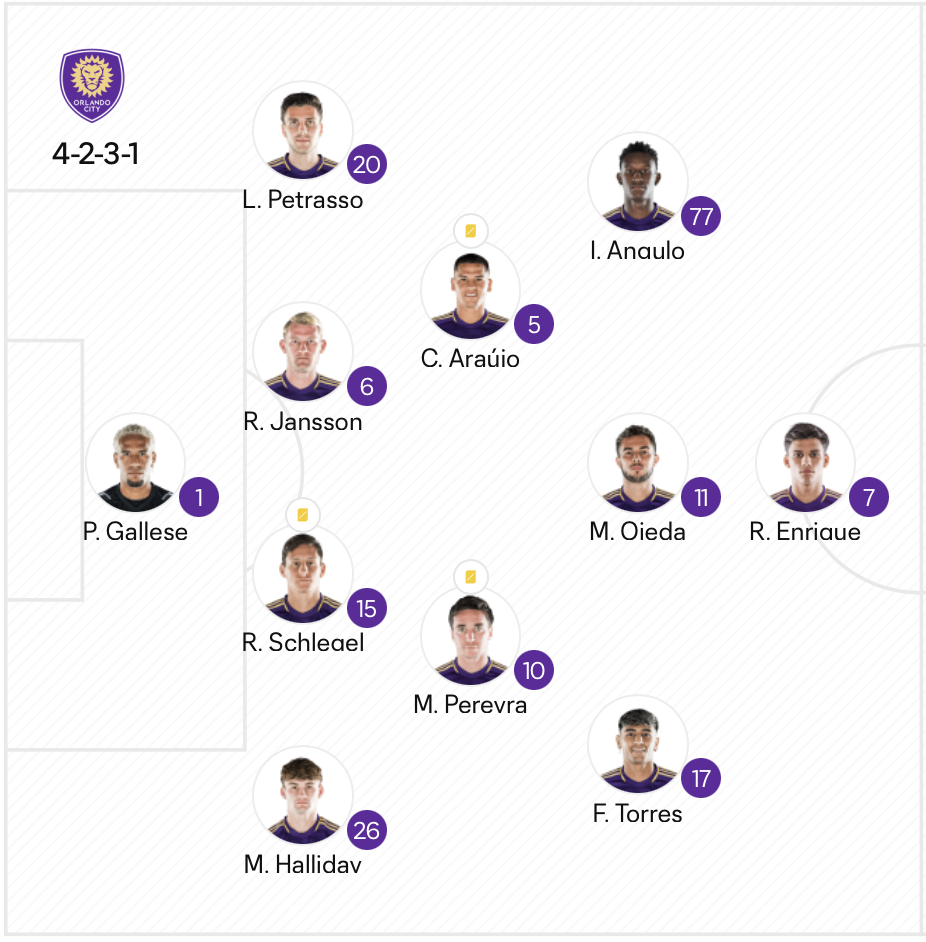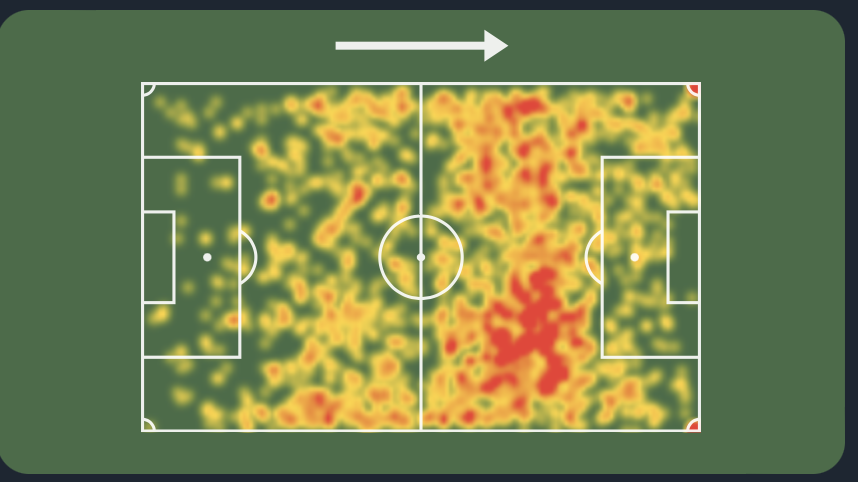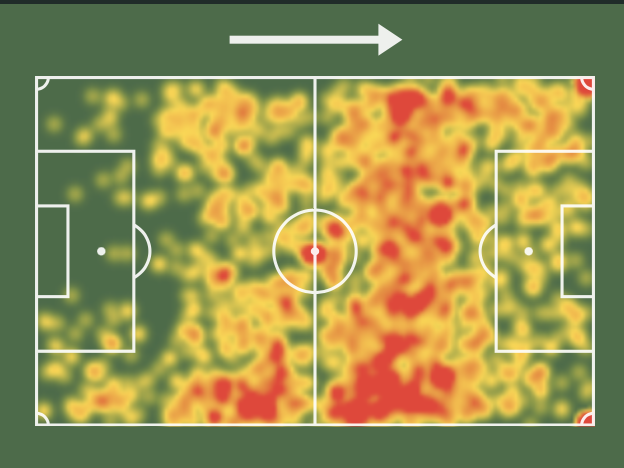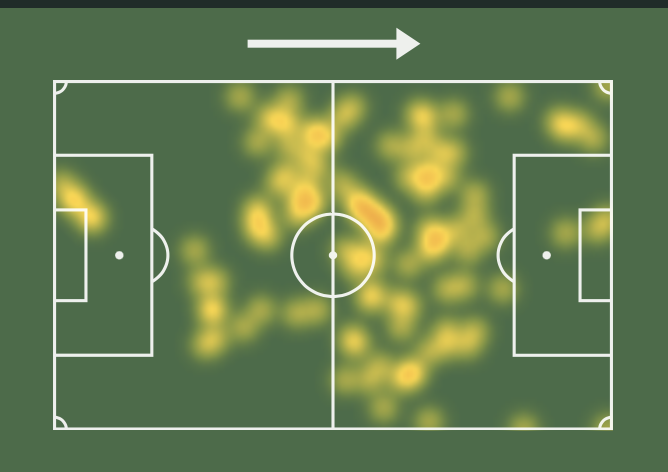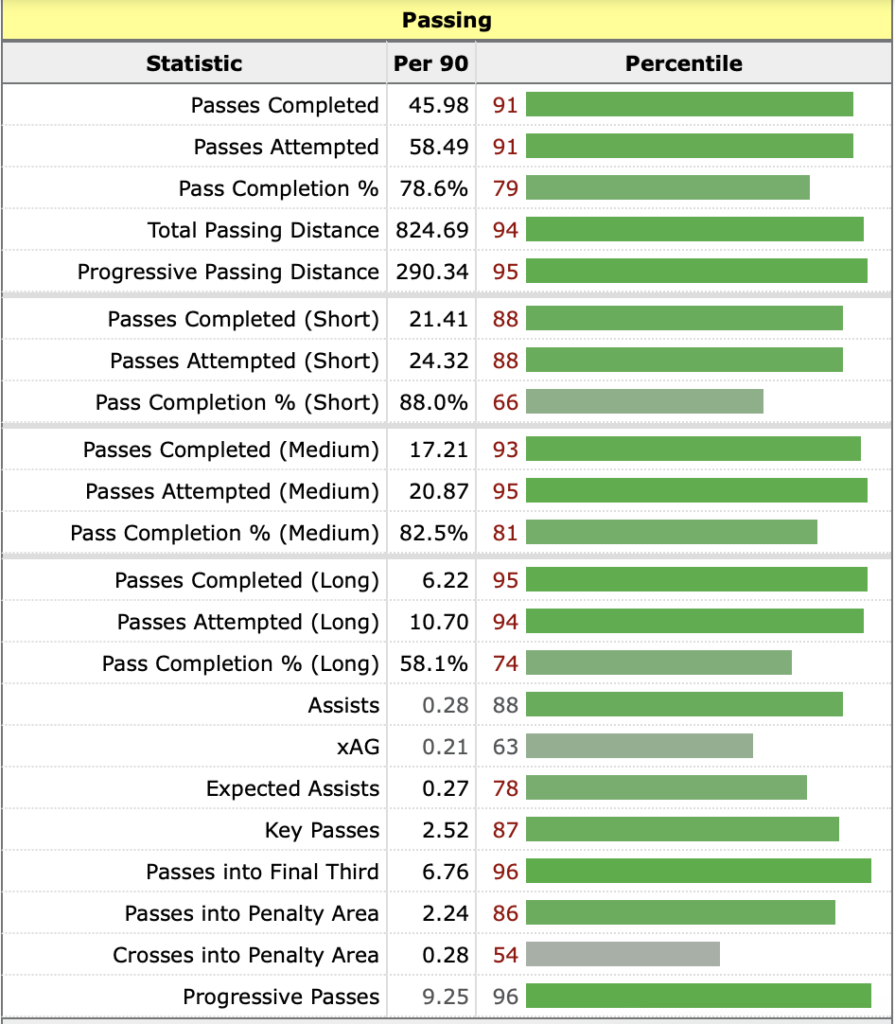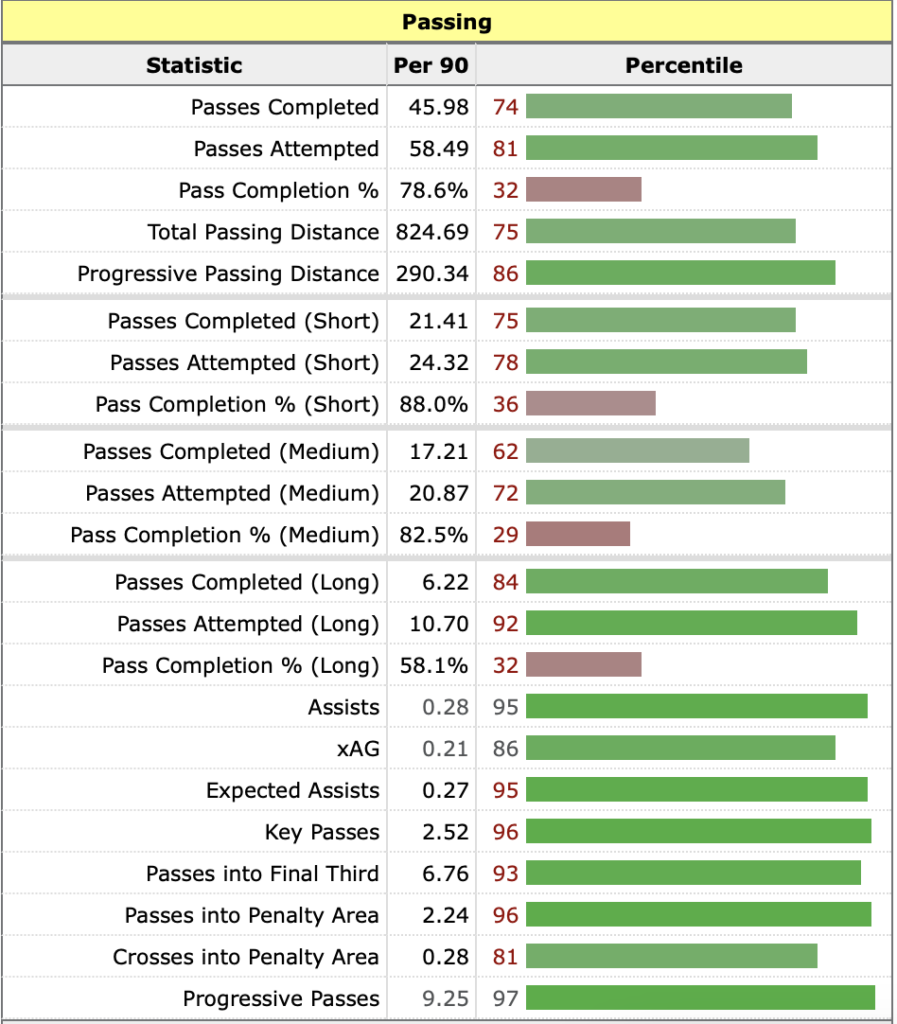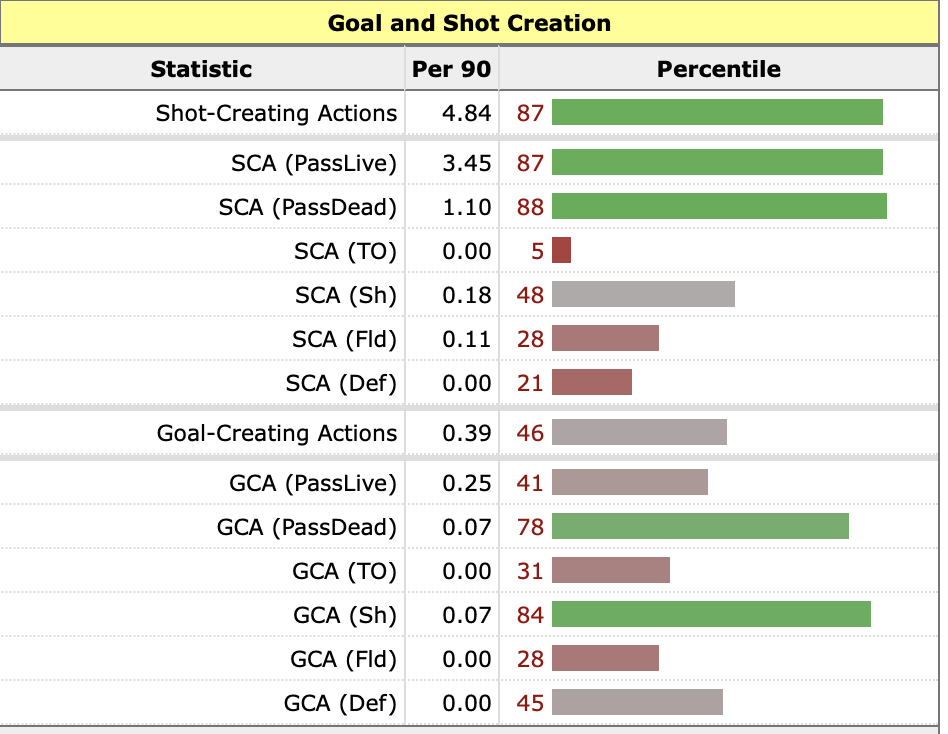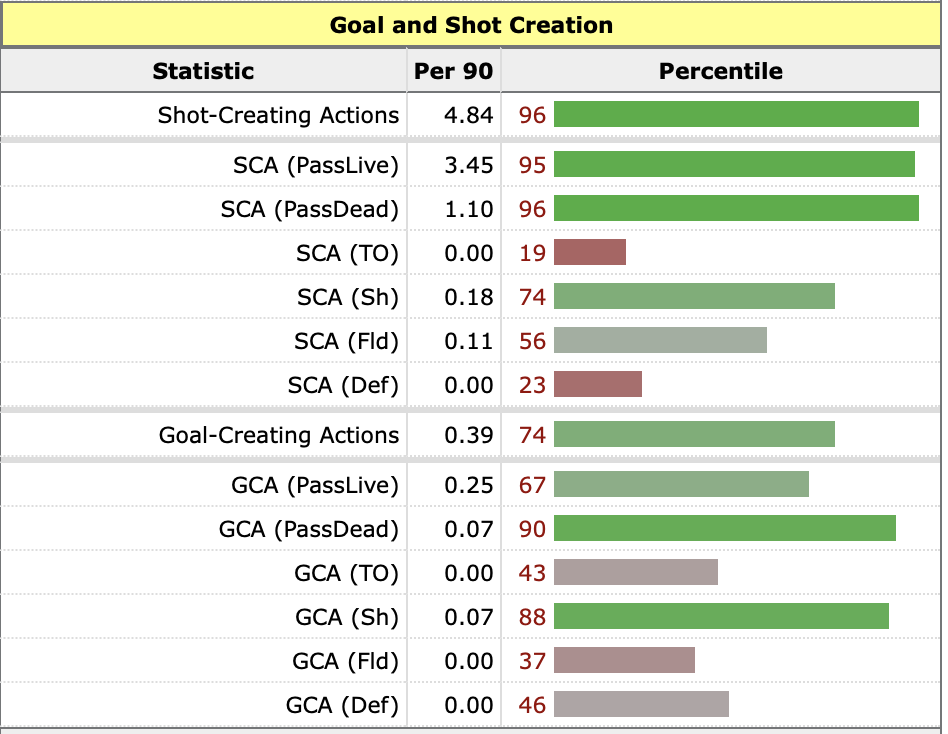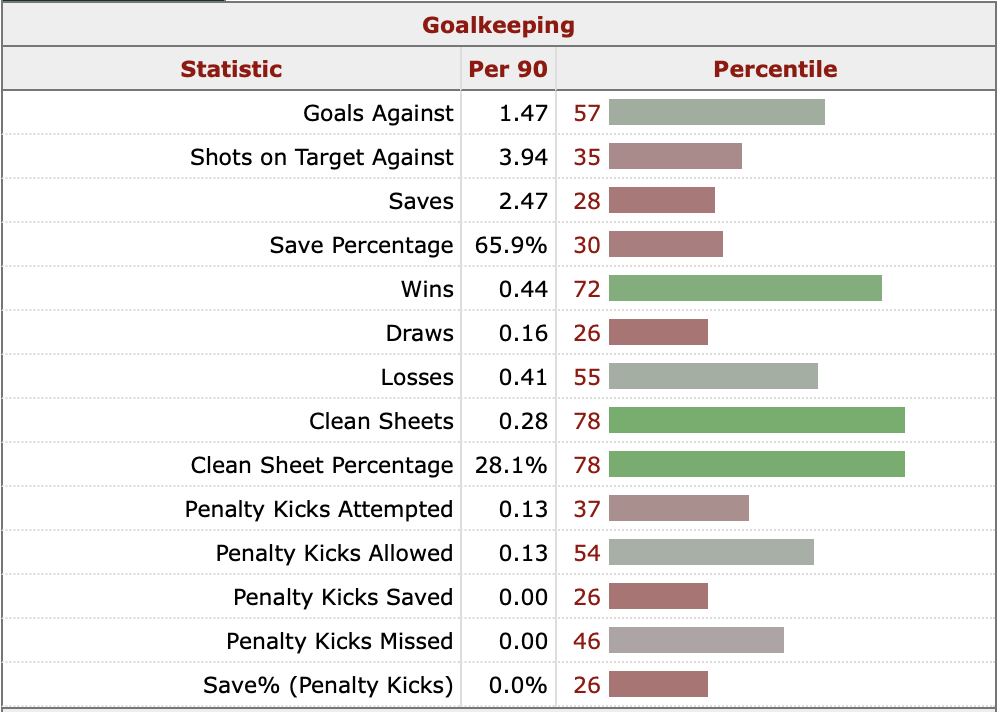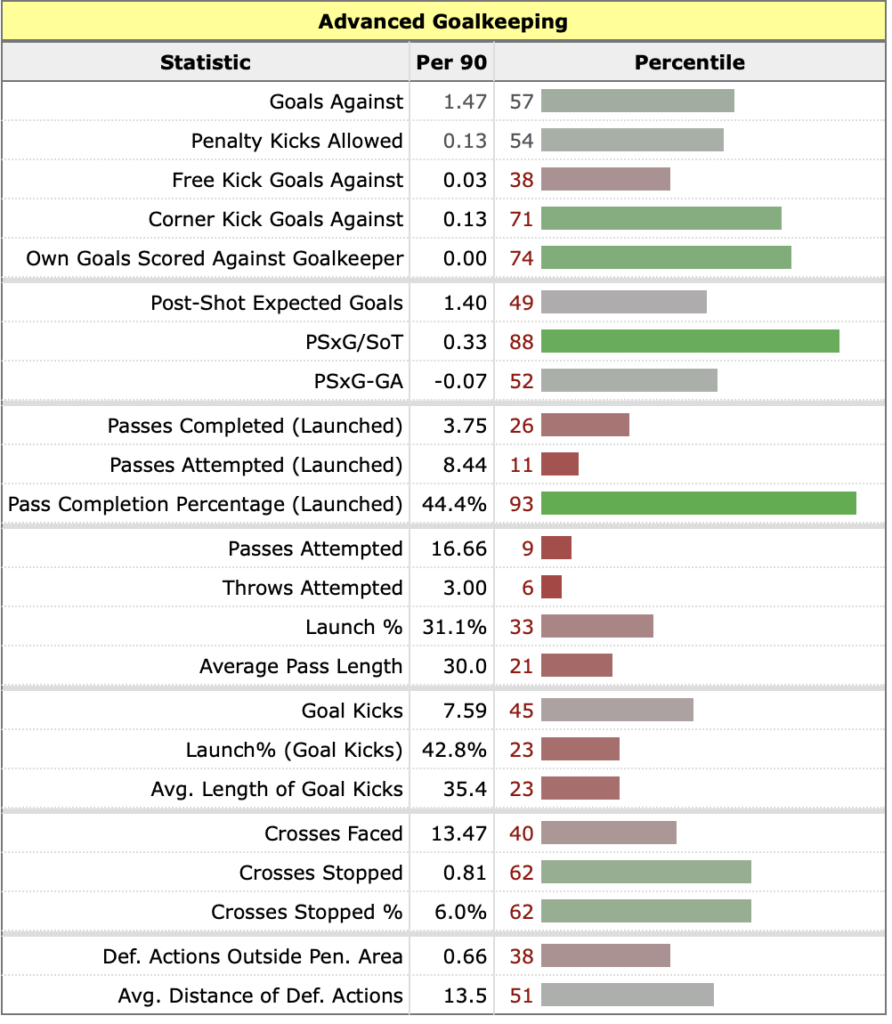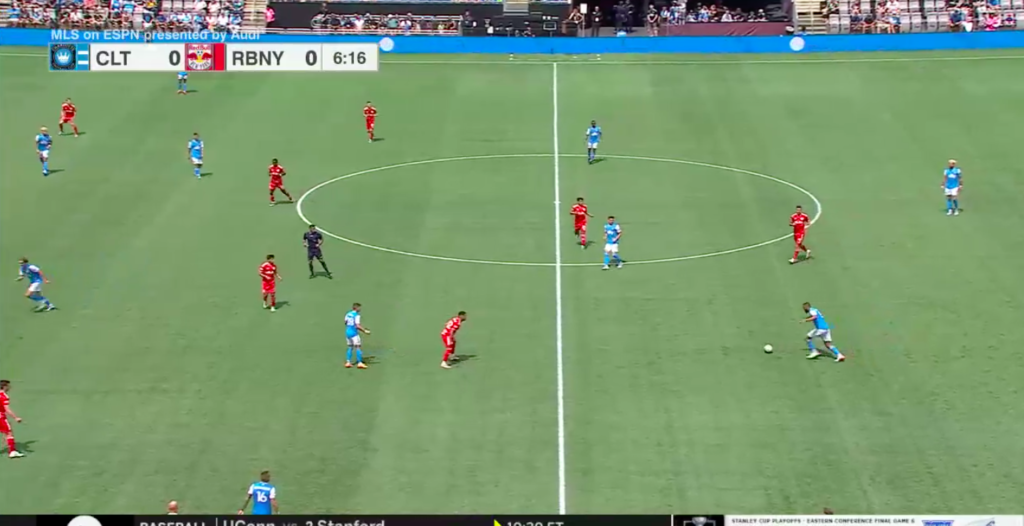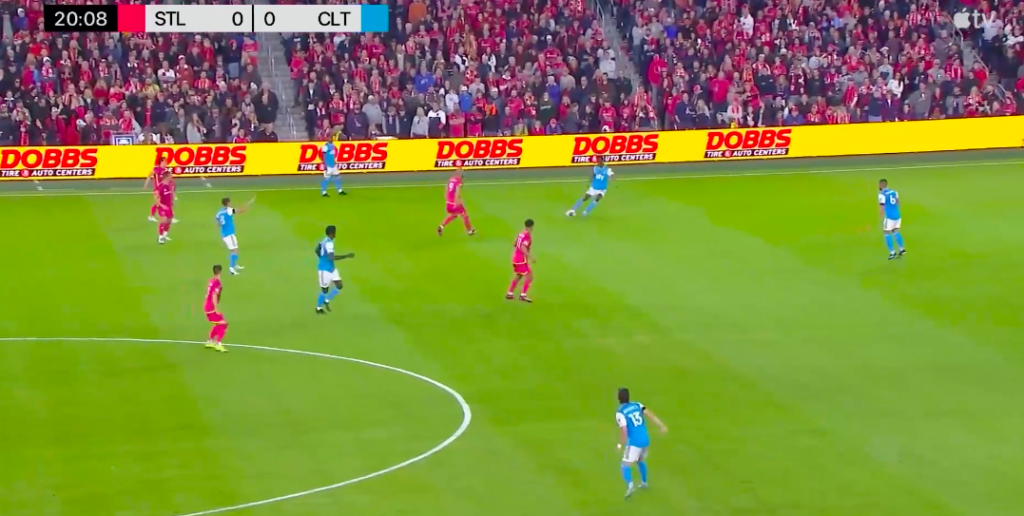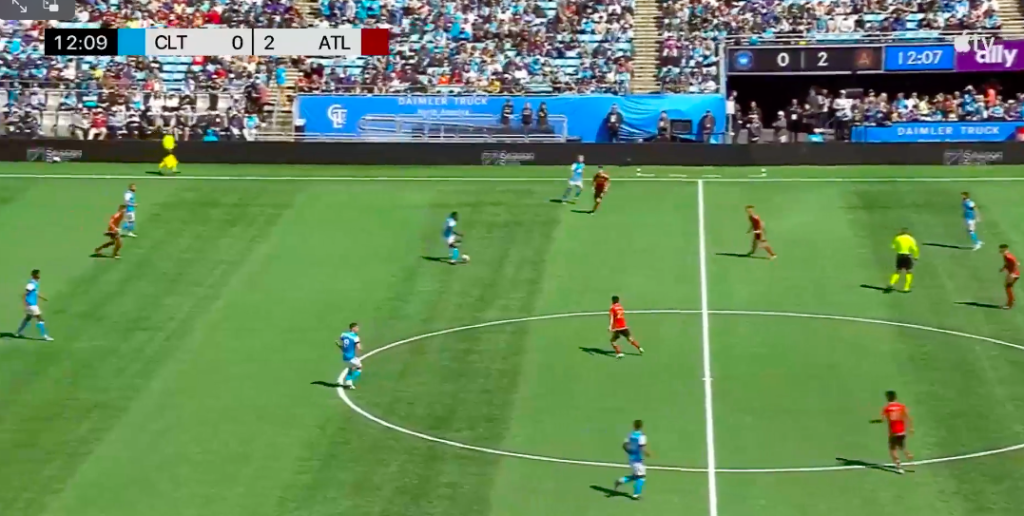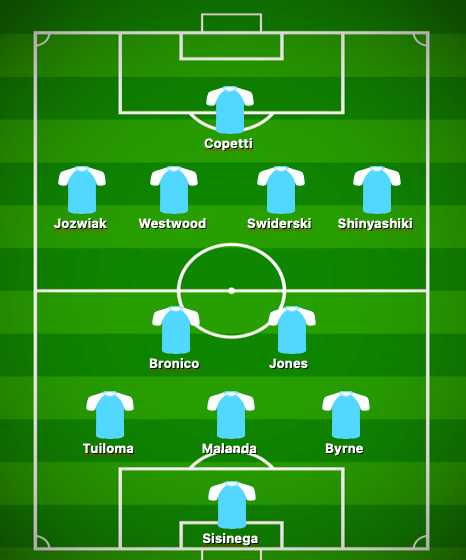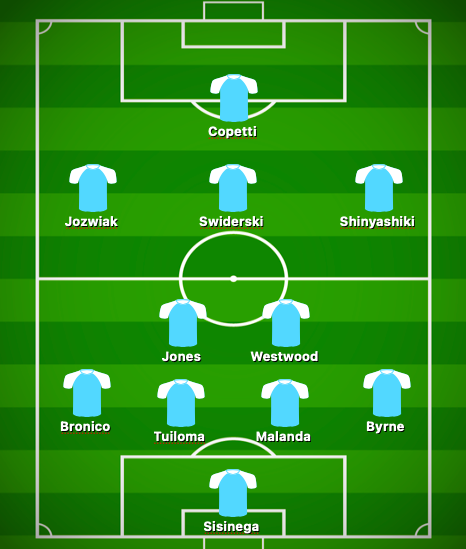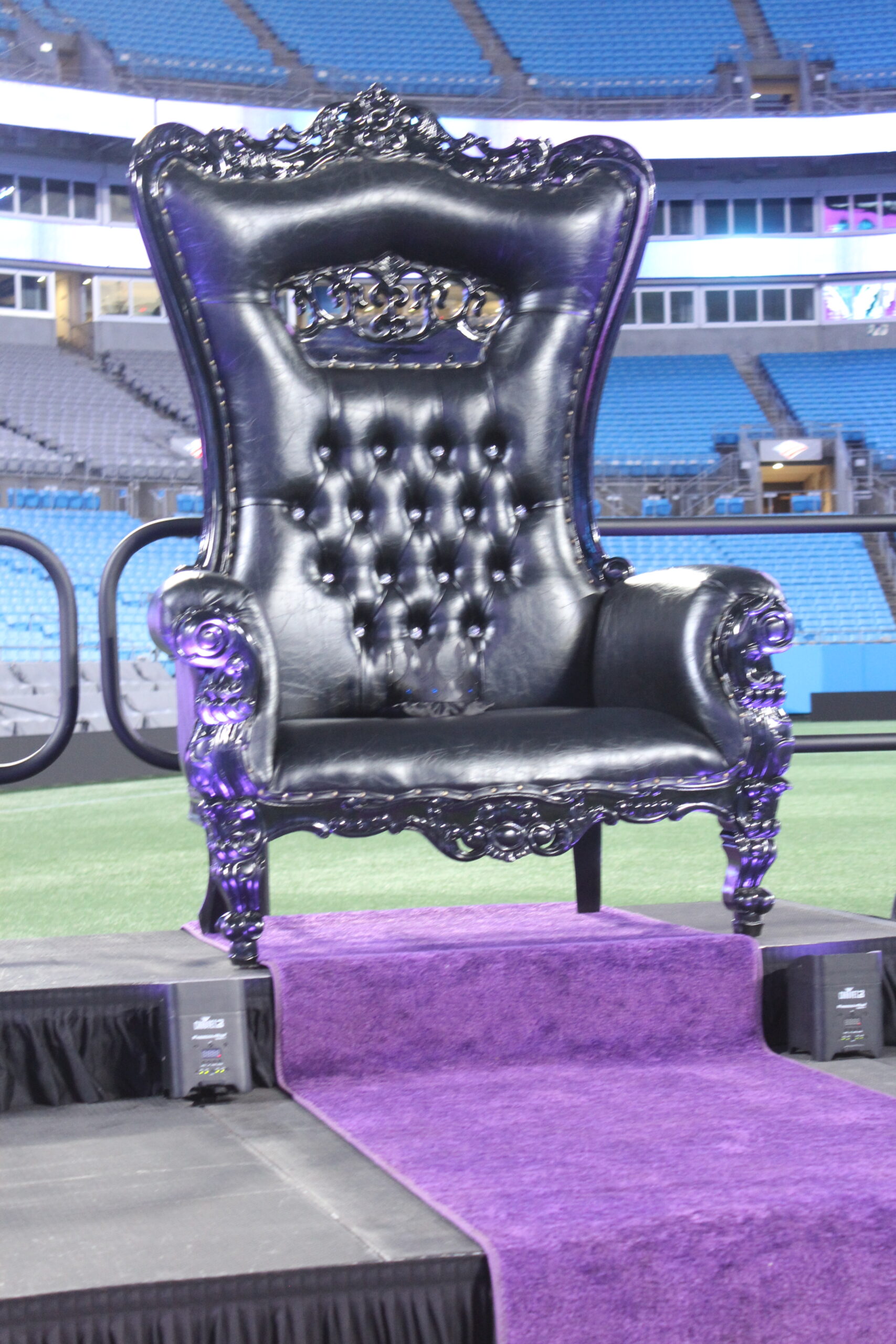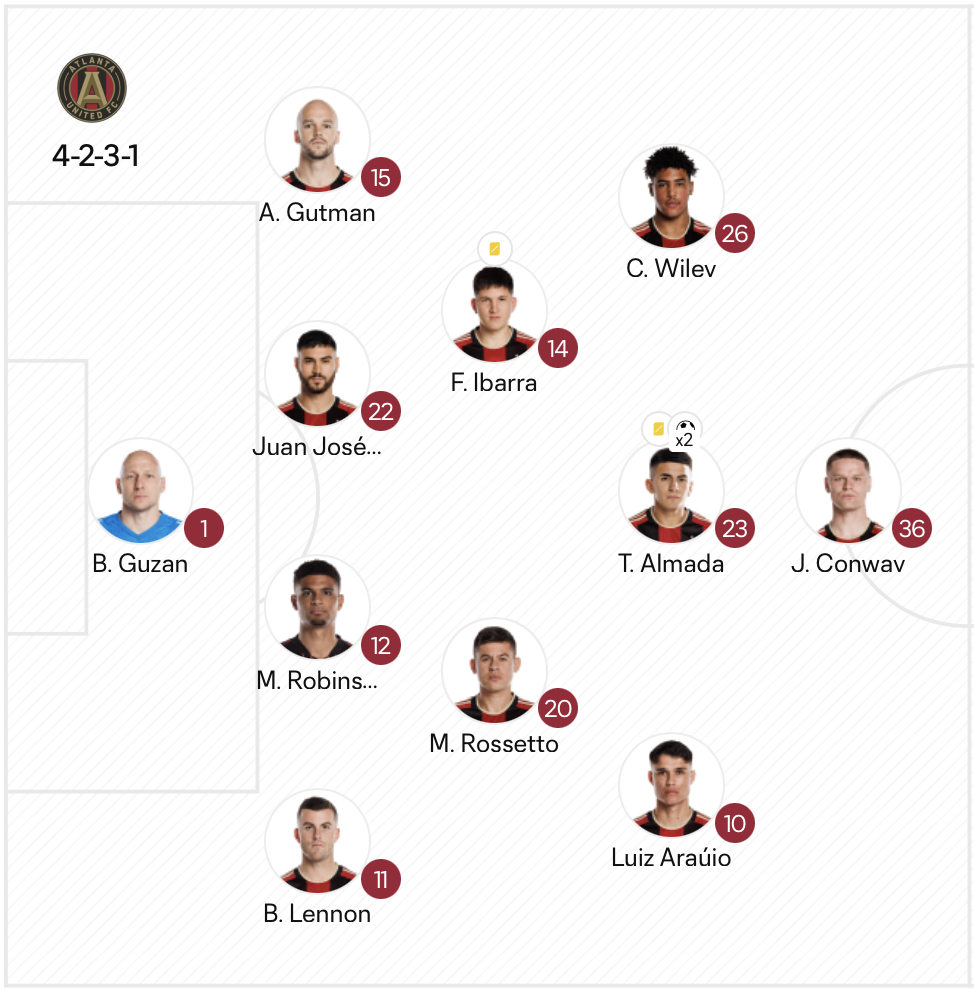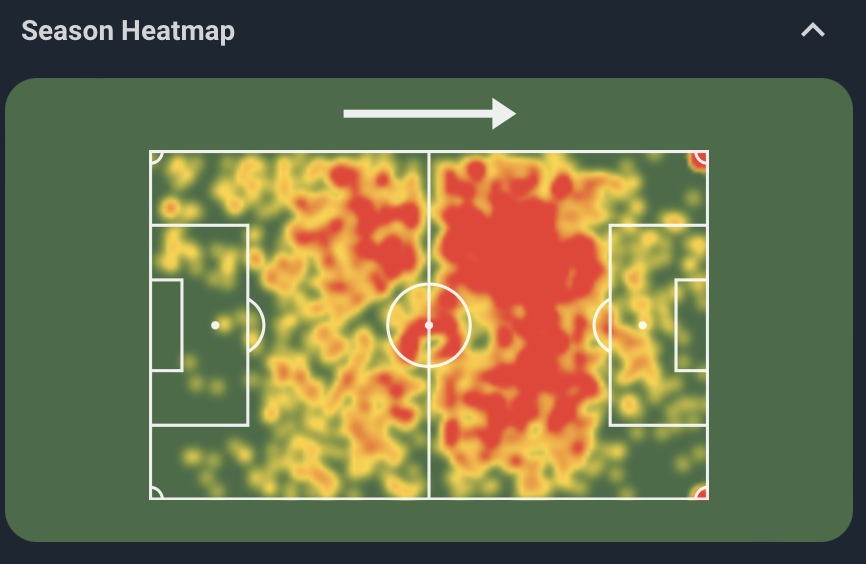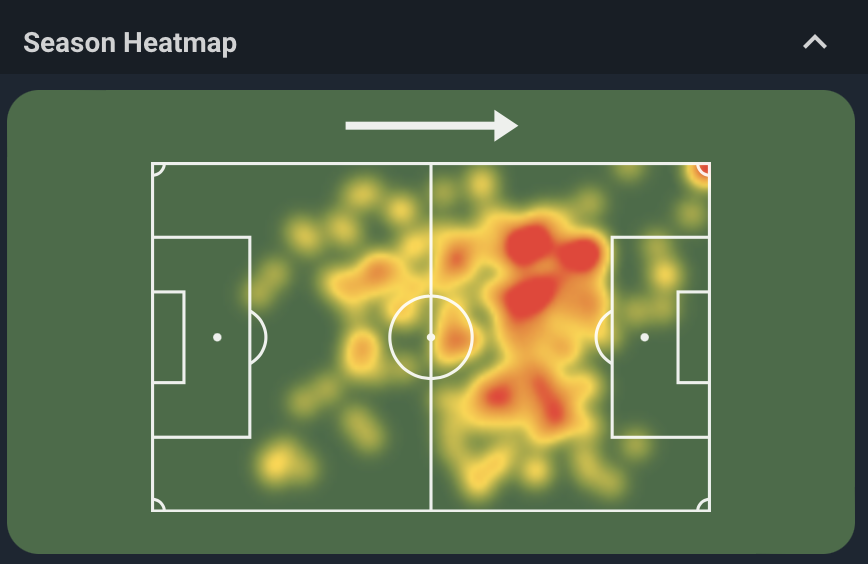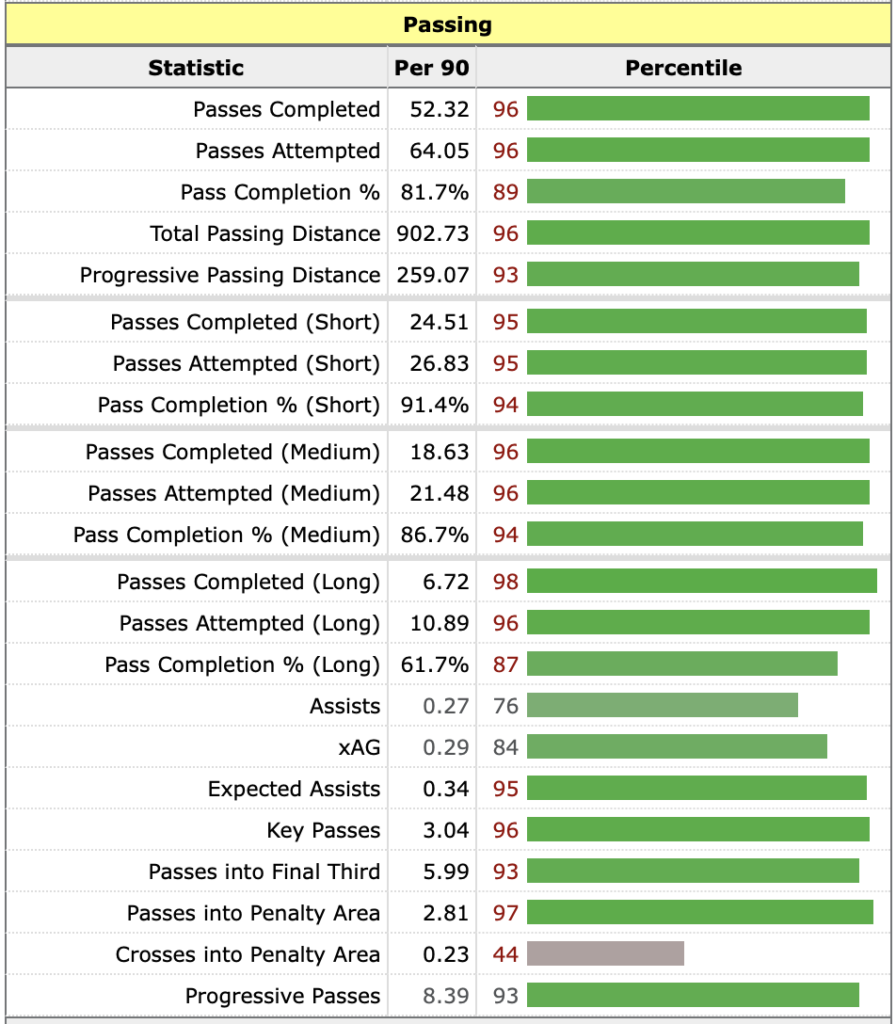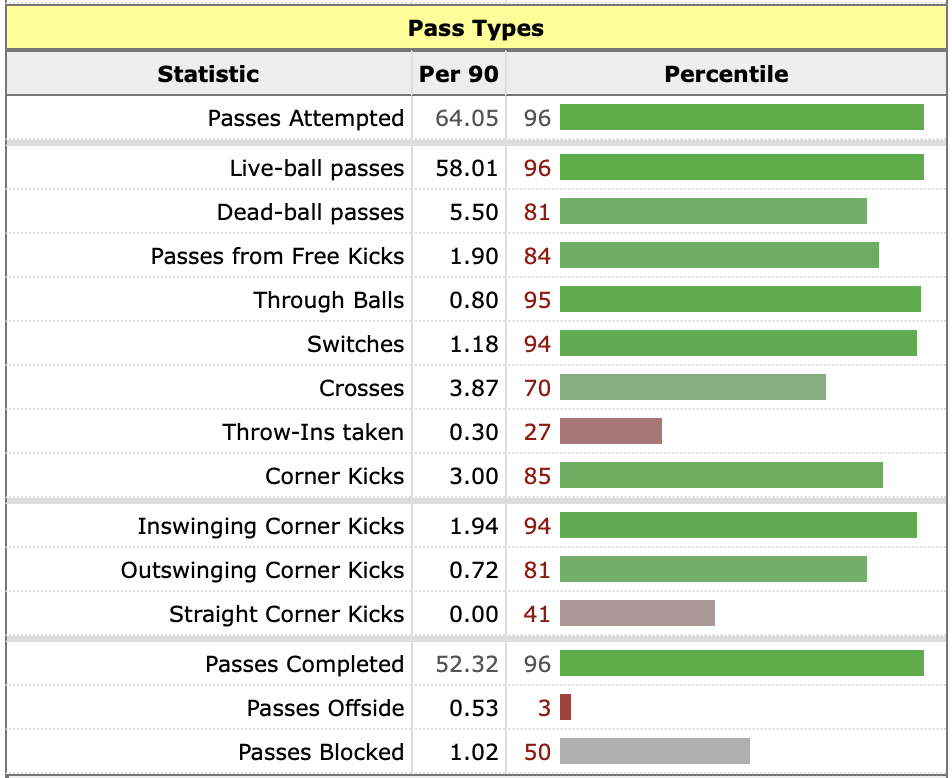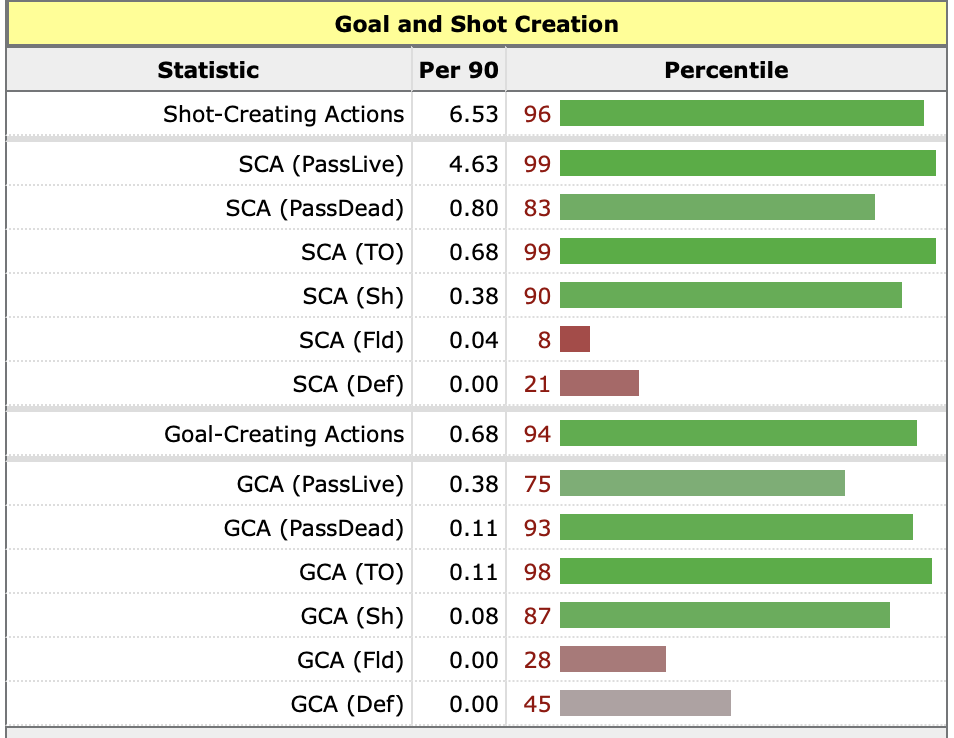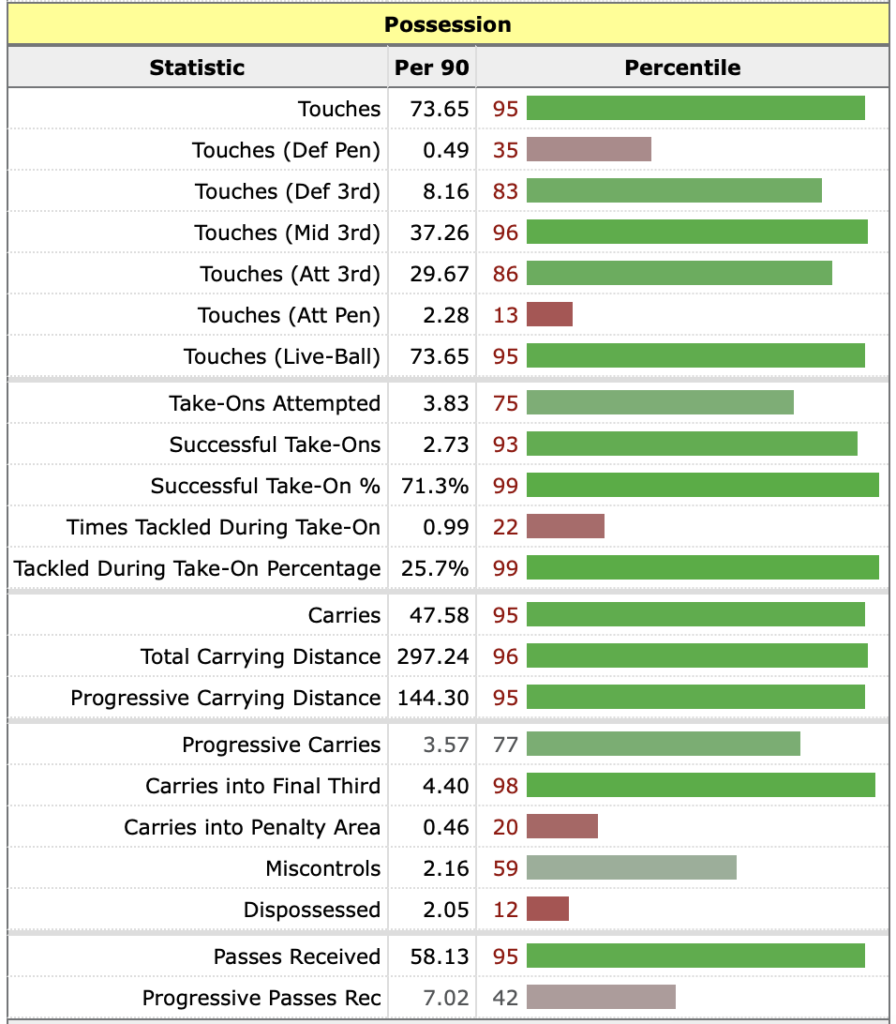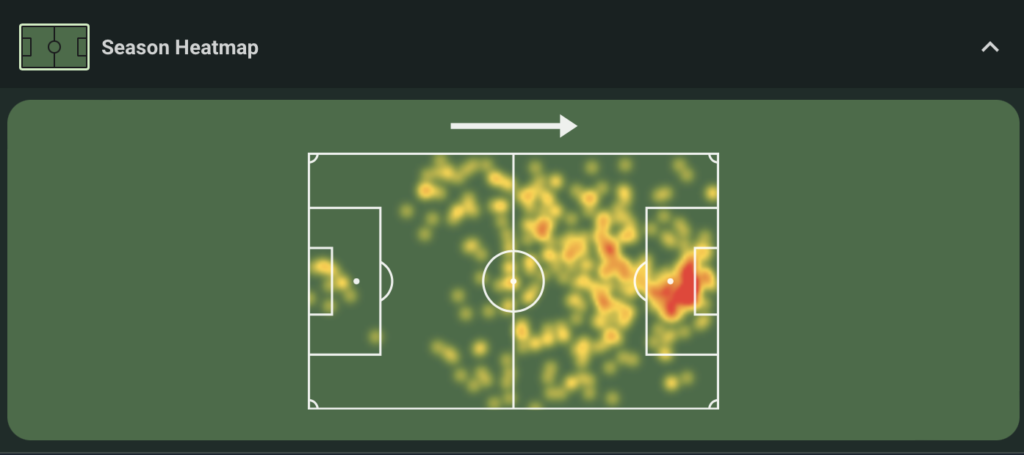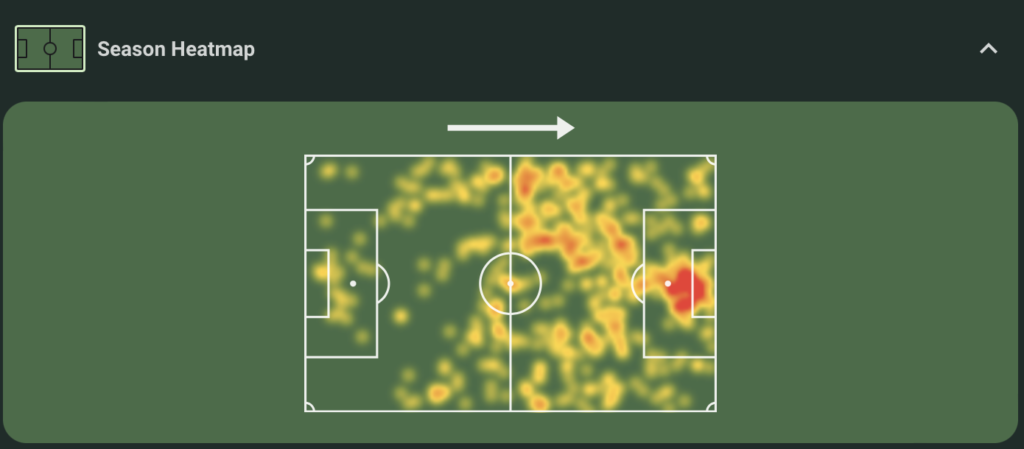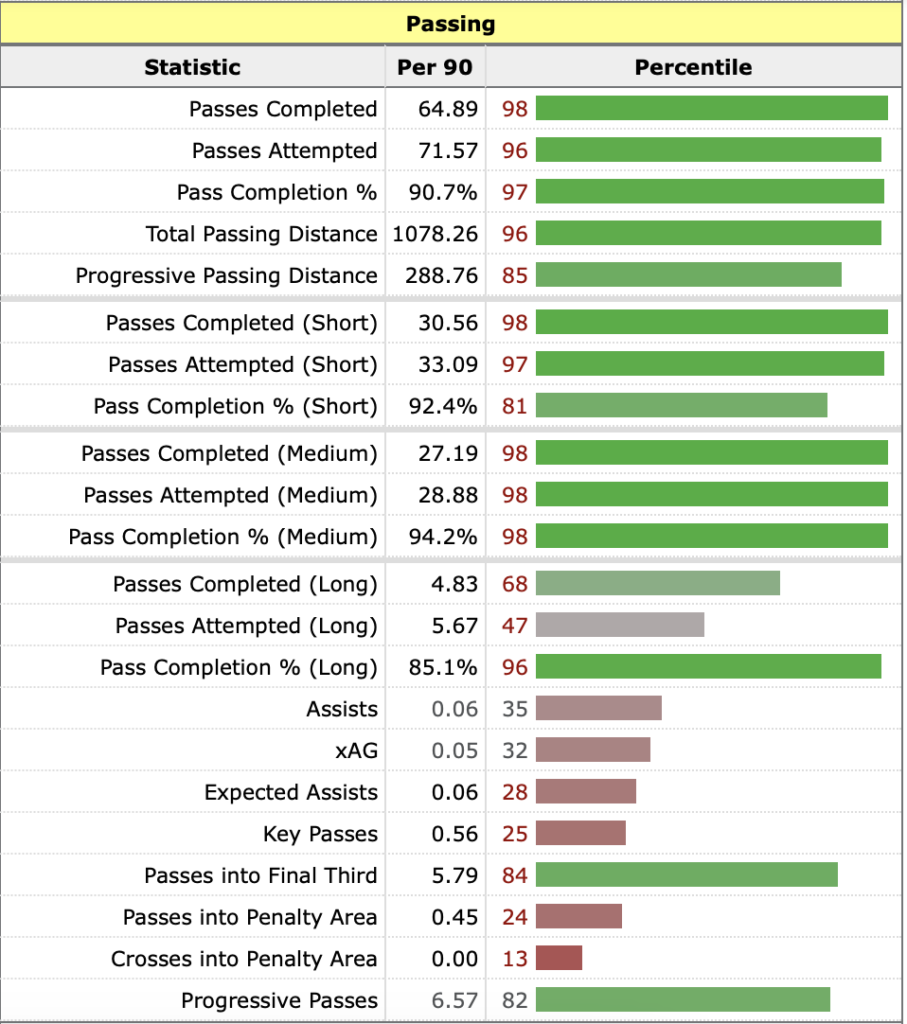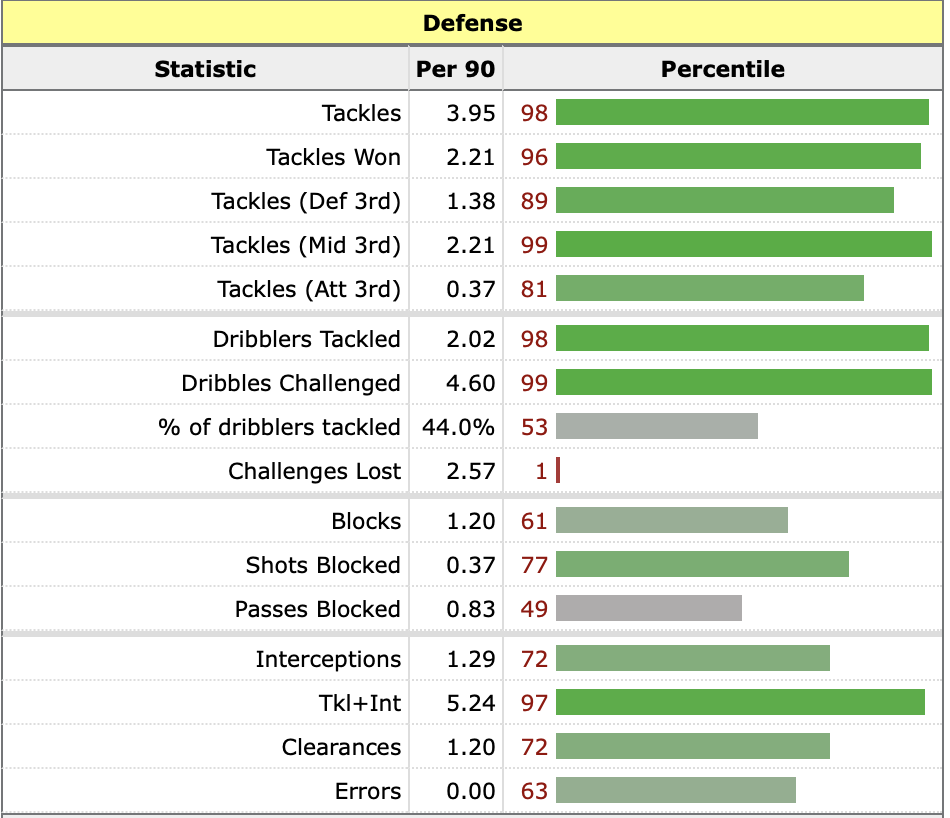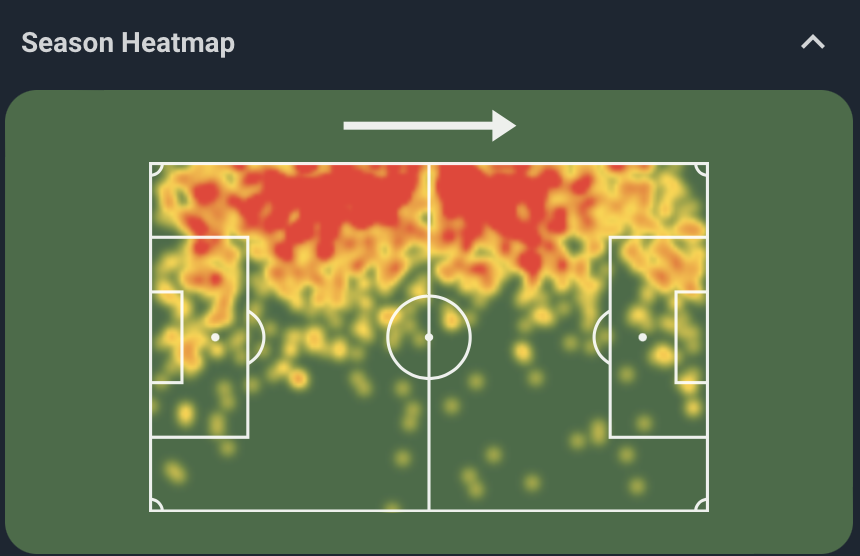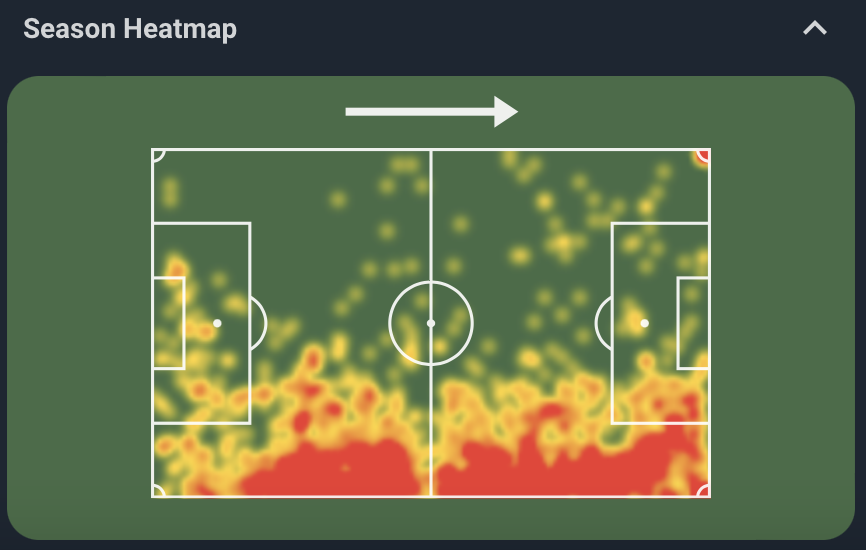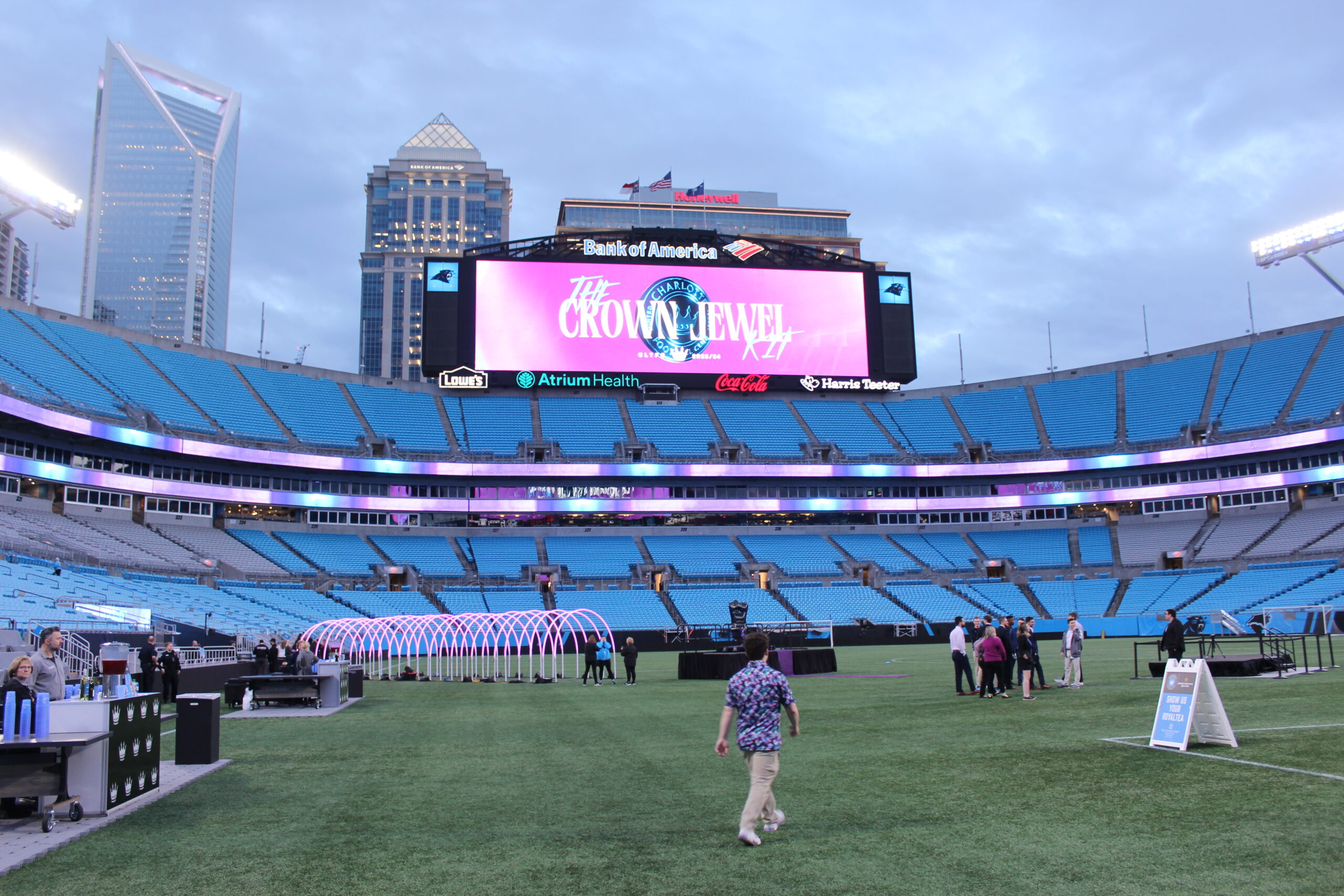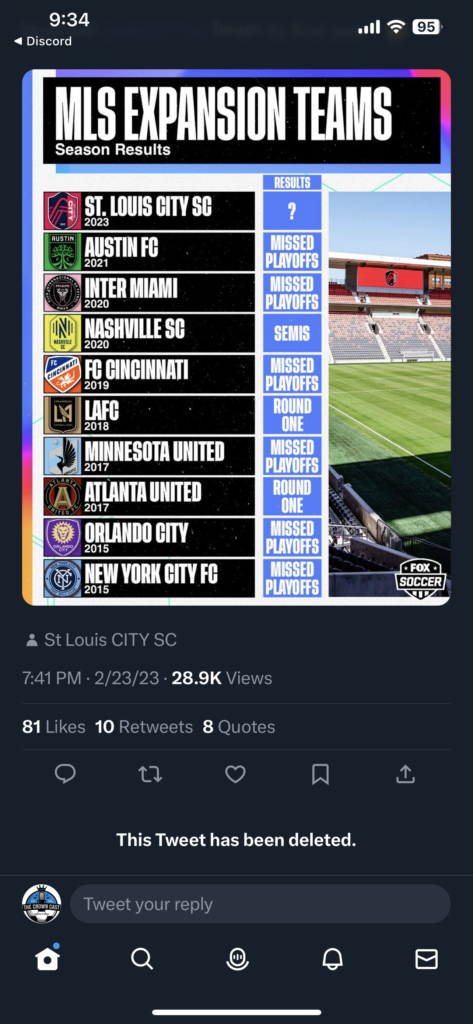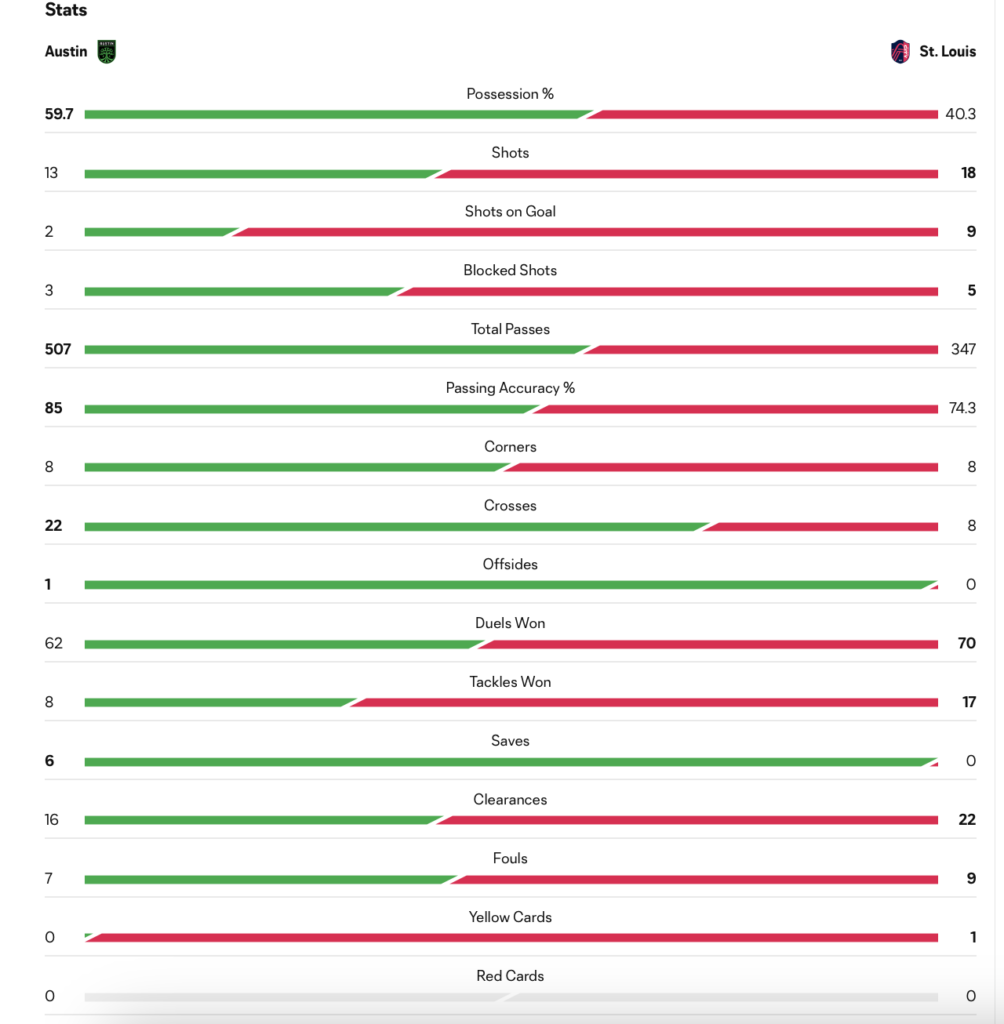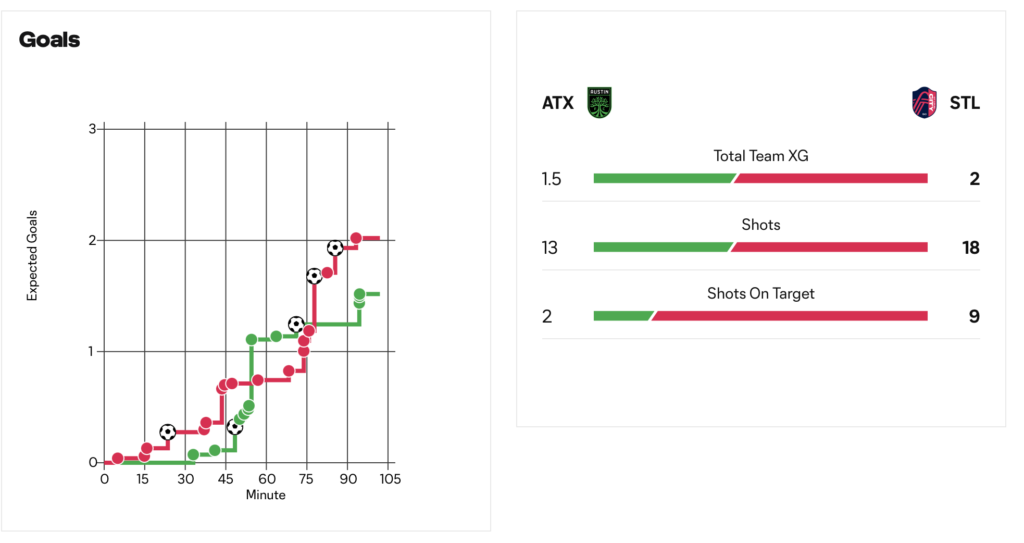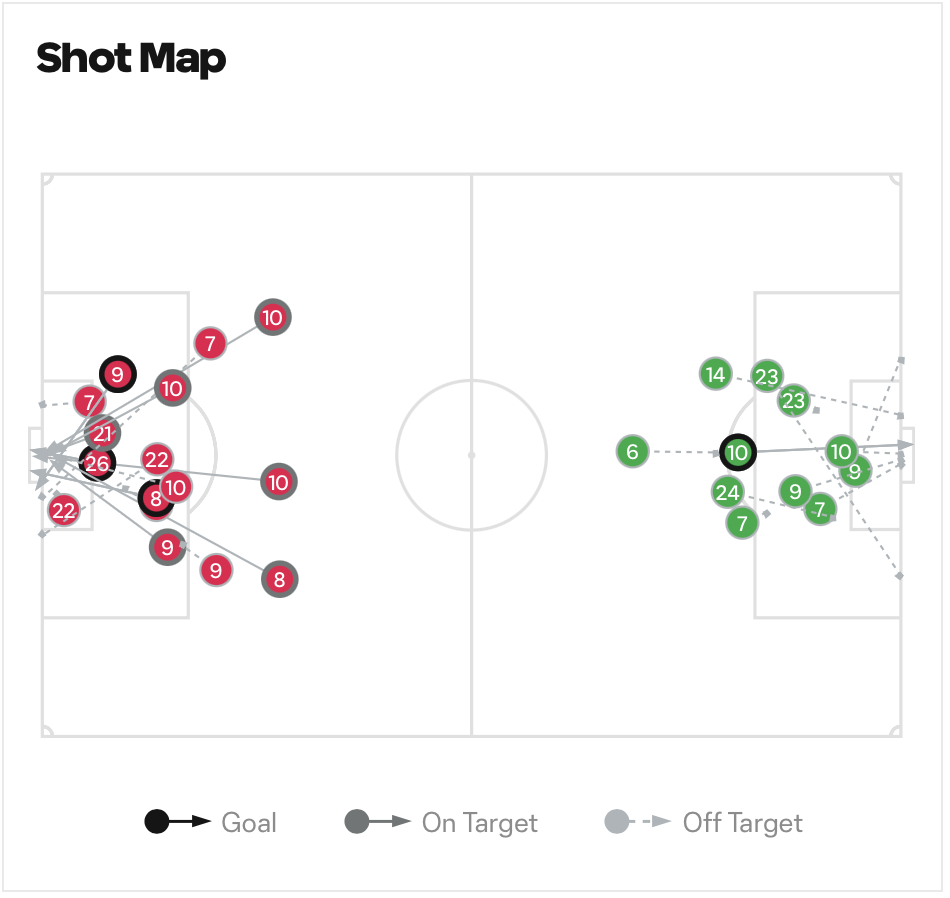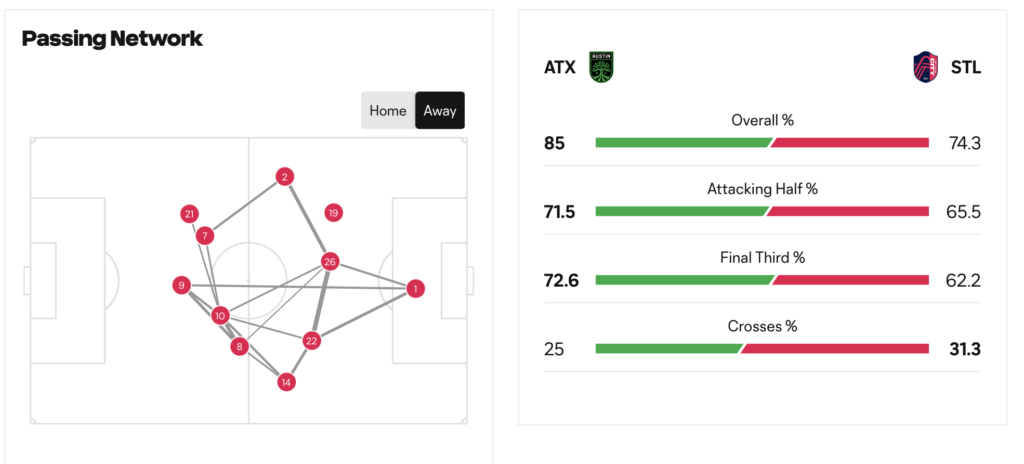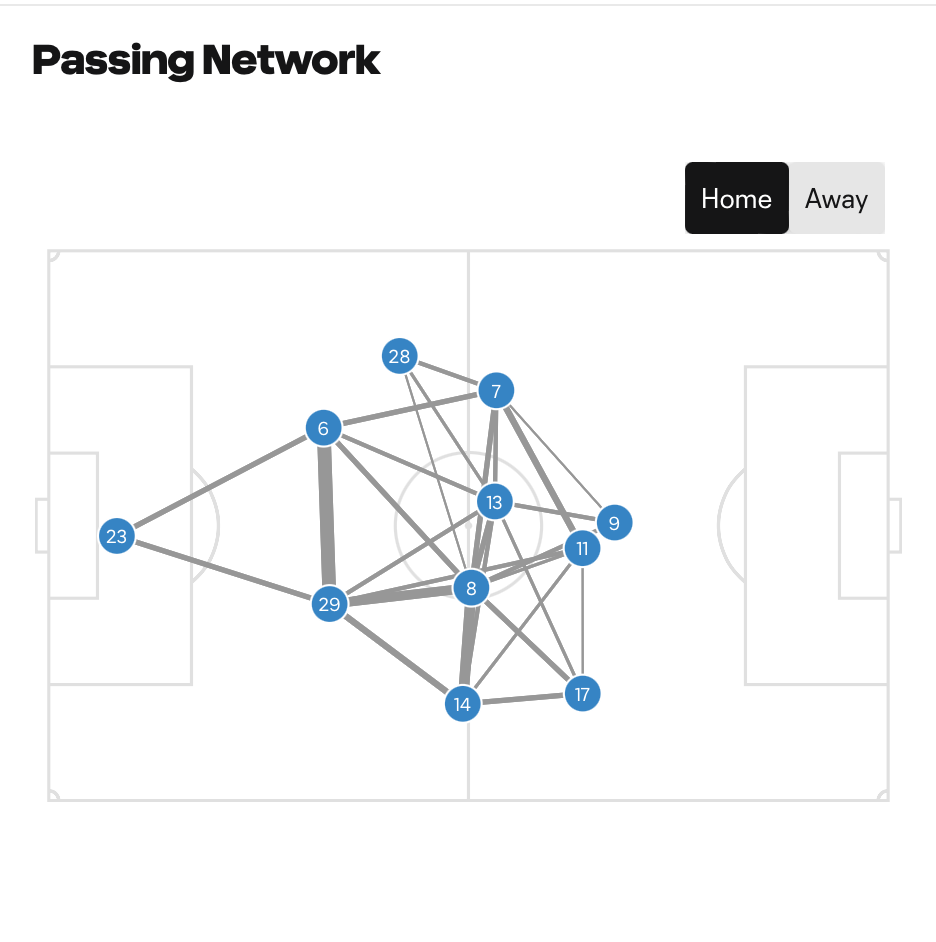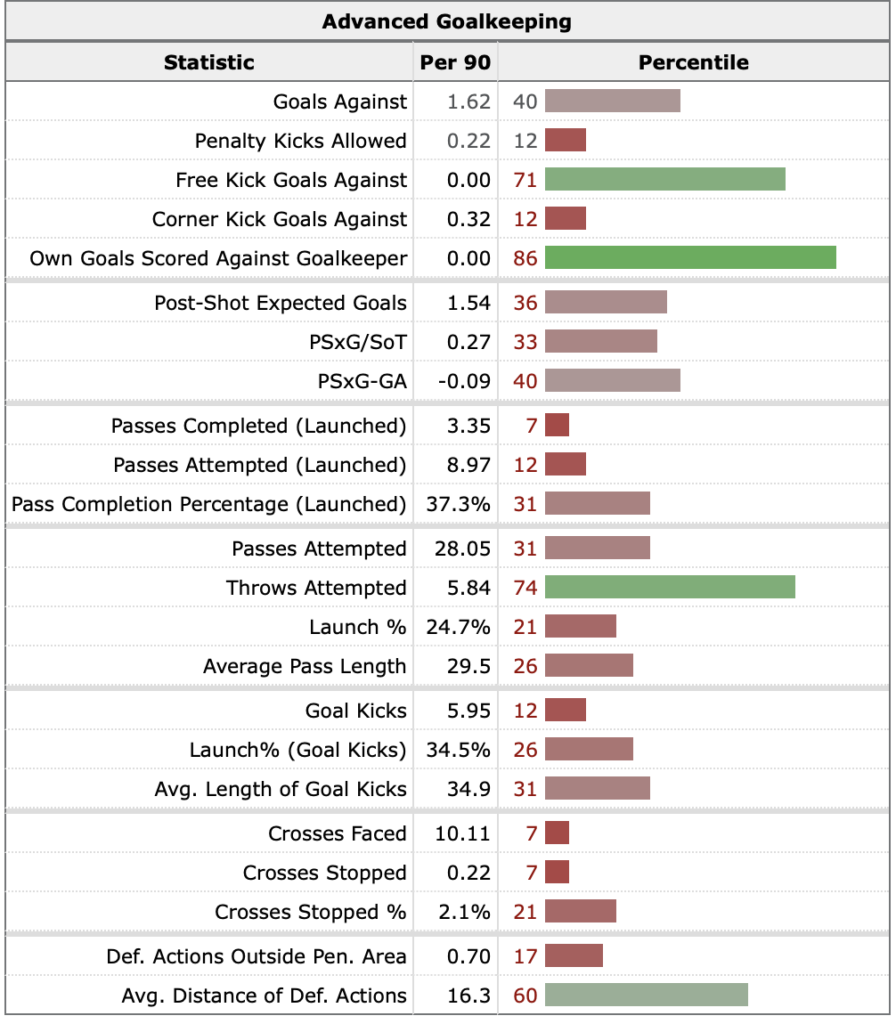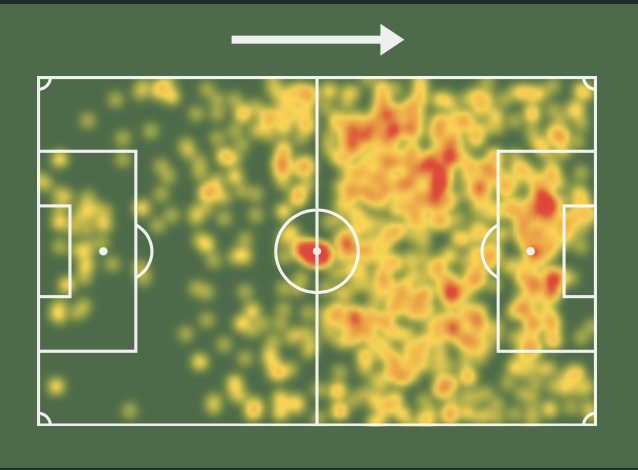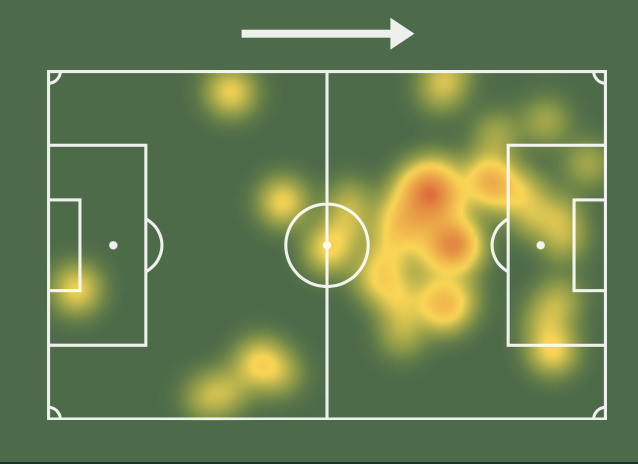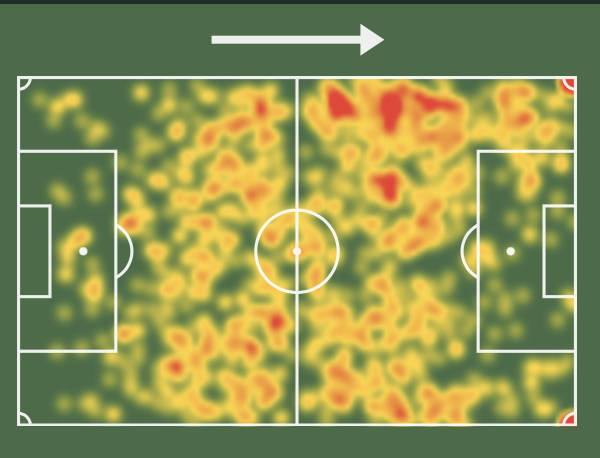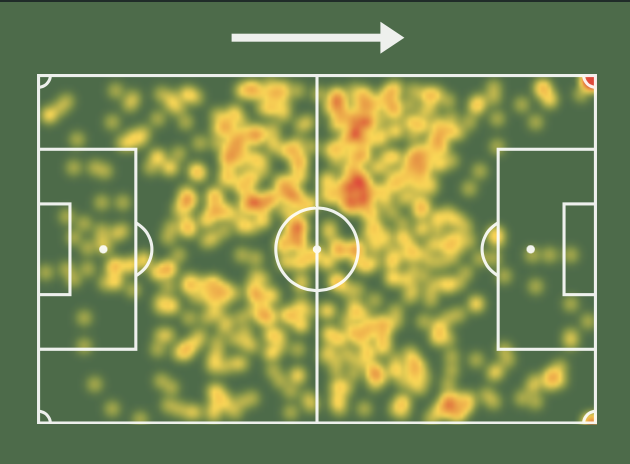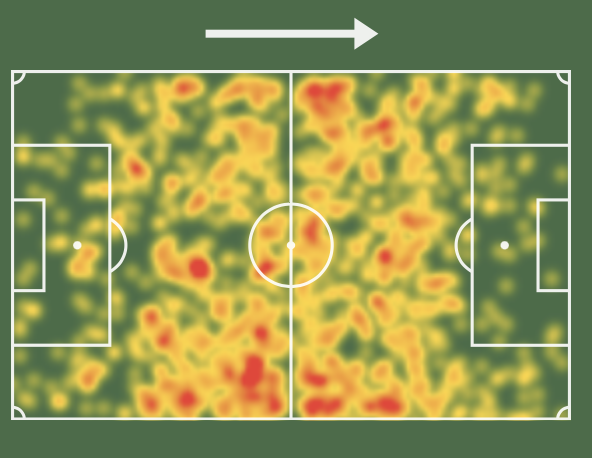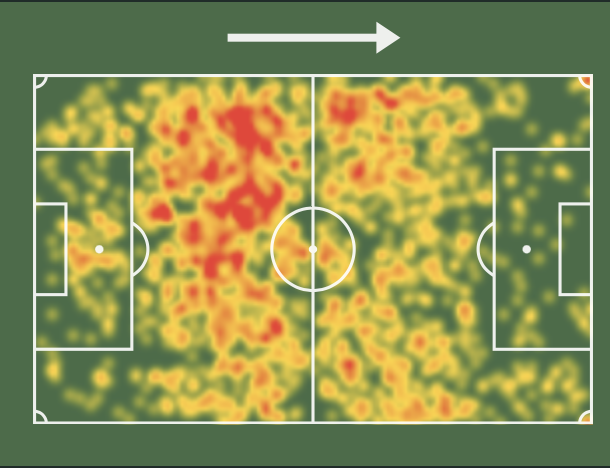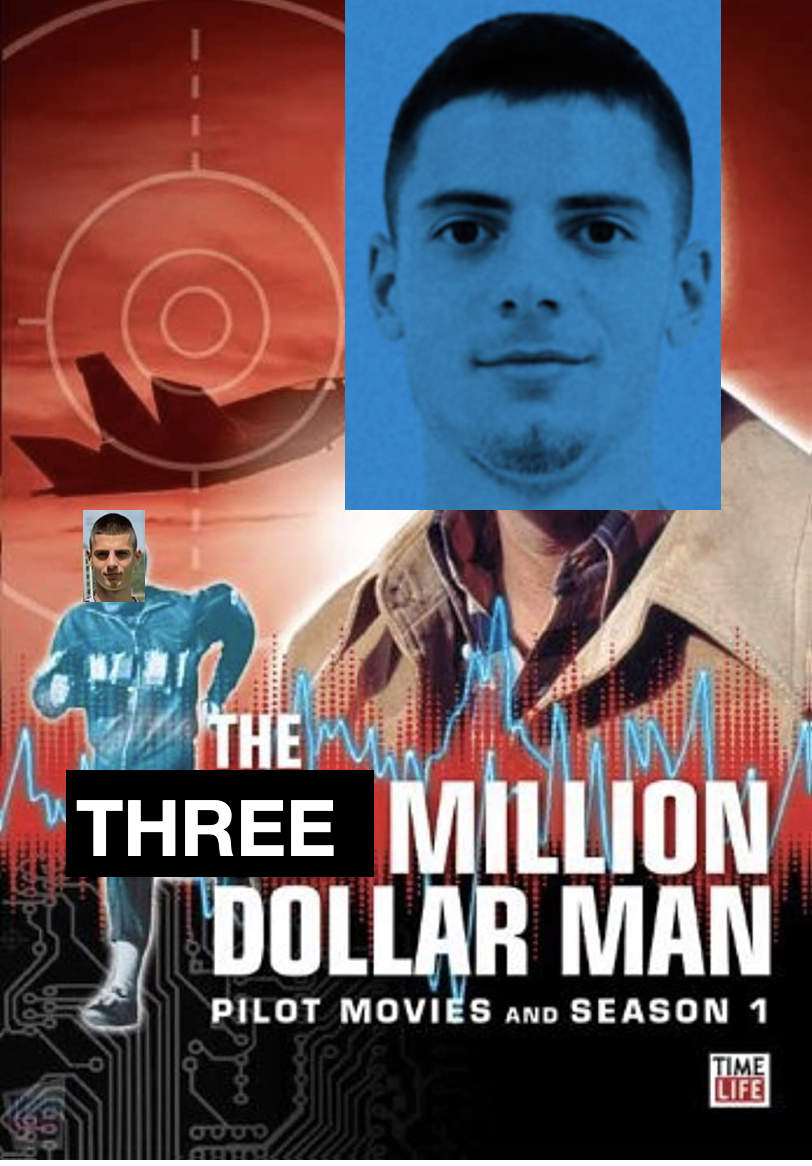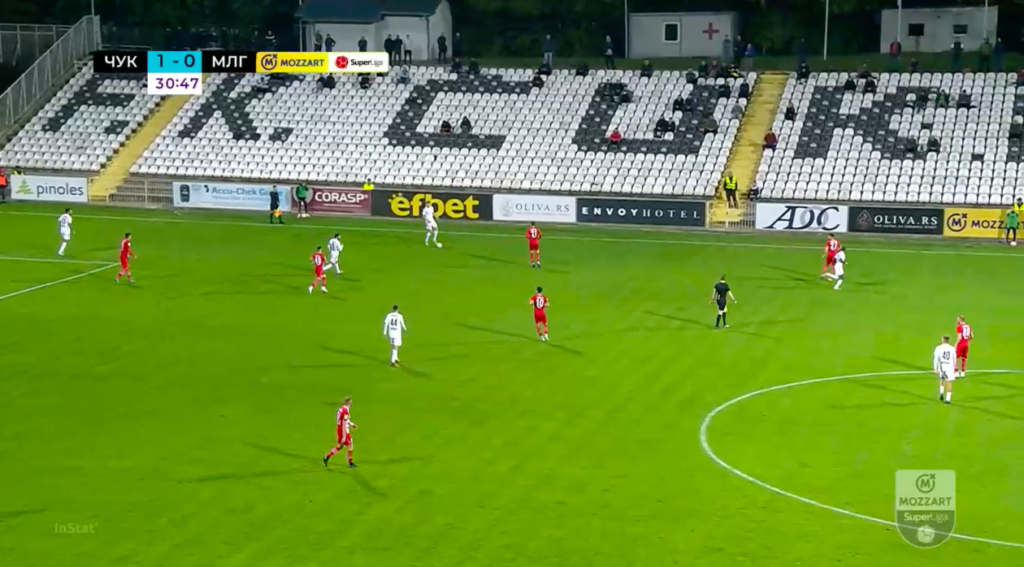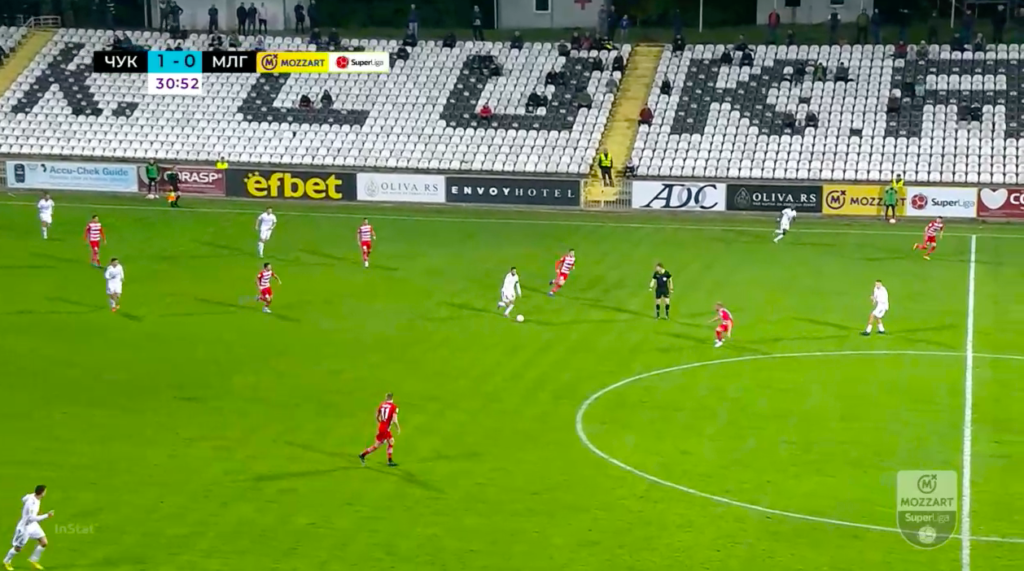There’s an interesting–if unsurprising–debate happening online right now about who should be playing for this club currently. Two trends I see:
- Enzo can’t play up top alone.
- Sobociński should be getting time over Tuiloma.
Both of these ideas confuse me.
First, this team hasn’t scored goals, yet Enzo has 2. Second, and a strong small sample size warning applies here, he’s played about how he should be expected to play. He was a Rios replacement who was supposed to bring the same aspects to the team that Rios did, but better. Well, I’d argue he’s probably meeting that. Here are some indicators for him when compared to other MLS forwards for 2023:
- He’s in the 95th percentile for Average Shot Distance, meaning, he’s getting into excellent positions when he shoots.
- He’s in the 70th percentile for Shots on Target % and Goals/Shots. He’s only in the 5th percentile for Shots Total, but I don’t think we can blame him for the dysfunction of our attack.
- He’s in the 75th percentile for Progressive Passes Received, meaning, he’s consistently making himself available for forward passes from teammates.
- He’s in the 75th percentile for Goals-xG, which means he’s outperforming his xG (which is a good thing considering this team’s struggles on the offensive side of the ball).
Are there areas where I’d like to see him improve? Sure. But Enzo is in the mold of a traditional striker. He’s also one that appears to be better in a more transition-based side, whereas CL wants possession.
Enzo hasn’t been perfect, but the frustration with him seems to come from his supposed “antics” (something I disagree with). This subjective anger at “antics” has bled into and created this idea of a “performance” issue. I really am not seeing that. To me he’s often been isolated up top, yet runs his a** off, holds up the ball decently, and seems to take chances when they infrequently come.
The Sobo over Tuiloma argument is even weirder to me. We have allowed a ton of goals this year and we have had numerous errors from defenders that have led to it (Tuiloma’s own goal and his bad back pass, Malanda’s bad back pass, Byrne’s bad back pass). We’ve allowed 4 goals, though. Those defensive errors are important, but they’re not the main reason that we’re allowing so many goals. It’s a team issue.
There is consistently loads of space between lines for opponents to exploit, both in terms of passing and positioning. Charlotte’s backline often has multiple attackers running at it, seemingly unopposed by anyone in the midfield. Our midfield has been porous and it’s coupled with CL’s usage of fullbacks, which allows space in behind. I believe in Sobo’s talent, but he’s not making a meaningful difference in this squad right now. We’re not talking prime van Dijk here. Frankly, I don’t believe he’s better than Tuiloma right now and I don’t think it’s particularly close.
To my eyes, Sobociński has struggled with the Legacy. How is that going to get better at the MLS-level? Sobo is talked about as if he’s this exceedingly young CB. He’s young at only 24, but at 24 Tuiloma was in his 2nd season with Portland and had made 37 total appearances with 30 starts. He made 57 appearances and 43 starts for Portland over the next 2 seasons. Sobociński has made 9 career MLS appearances with just 3 starts.
Yet, Sobo is talked about as if he must be played due to some great potential talent. I would argue Tuiloma is more talented, plus has MLS experience.
In my opinion, the real reason that people are calling for Tuiloma to be replaced has to do with:
- We’ve shipped a ton of goals this season, so the correlation equals causation fallacy comes into play and Tuiloma is taking that blame.
- His 2 mistakes led directly to goals.
Regarding those 2 errors, as I honestly think that’s what colors the opinion of most people about Tuiloma. Those errors should not be dismissed, but, again, I implore you to look at his process over the results. He did everything right in terms of reading the game and positioning in both of those goals; he failed at the end with his execution. That is a problem! You need a defender that will reliably make the play in the big moments. Determining whether a player is reliable requires more than 6 games. The fact that he is closing in on 100 career MLS starts is more important to me right now than his 6 just with Charlotte.
The bottom line is we’re close to the point of “play the kids” but we’re not there yet. Inter Miami started last year with 7 points through their first 7 games (a draw, 4 consecutive losses, and then 2 wins). We are behind that pace, but not in an inconceivable way. Are we likely to make the playoffs based on current form and history? No. But it’s not quite time to throw in the towel.
Finally, I’m going to continue saying this until I’m blue in the face: Christian Lattanzio is NOT going to play a 4-4-2 or any other variation that puts 2 at the top. The only way this becomes a realistic possibility is if we actually see him do it, and we’ve never seen it. Please, I’m begging Charlotte fans to stop having this conversation. It’s tiring and pointless.
| Team | Possession | Points (Standings) | WhoScored Team Rating (SofaScore Team Rating) |
|---|---|---|---|
| Charlotte FC | 56.9% | 5 (14th in the East) | 6.50 (6.76) |
| Colorado Rapids | 49.9% | 6 (11th in the West) | 6.53 (6.80) |
| Team | Shots per game | Shots on target per game | Goals for (xG) | Goals against (xGA) |
|---|---|---|---|---|
| Charlotte FC | 10.43 | 3.43 | 7 (7.0) | 14 (10.7) |
| Colorado Rapids | 11.43 | 3.29 | 3 (8.5) | 8 (10.1) |
On the surface, Colorado seems like a poor offensive team, having only scored 3 goals. However, Colorado’s massive underperformance on goals versus their xG has me worried. I’m not saying they are a juggernaut of an offensive that has had severe bad luck, but a gap between actual goals and xG leads me to believe they’ll revert to the mean shortly.
Charlotte, meanwhile, continues to rack up possession numbers that lead to nothing. We continue to be second in the league behind only LA Galaxy in this category.
Lineup and Roster Breakdown
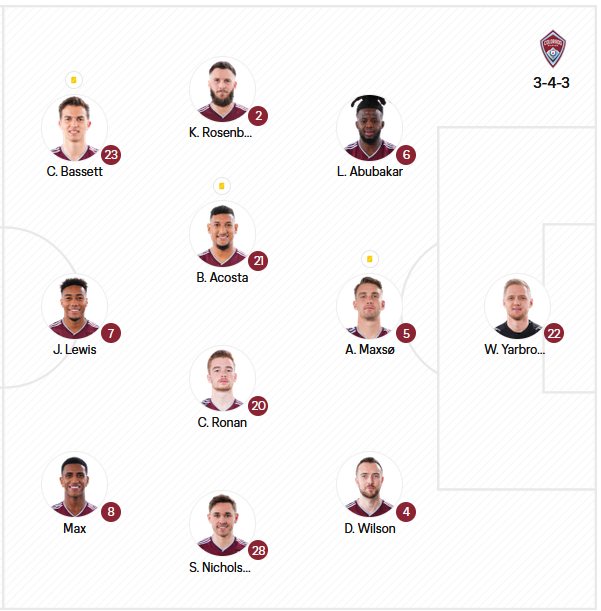
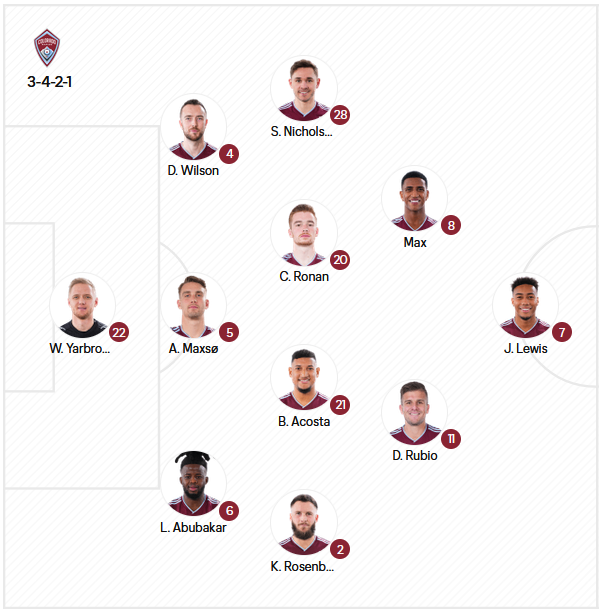
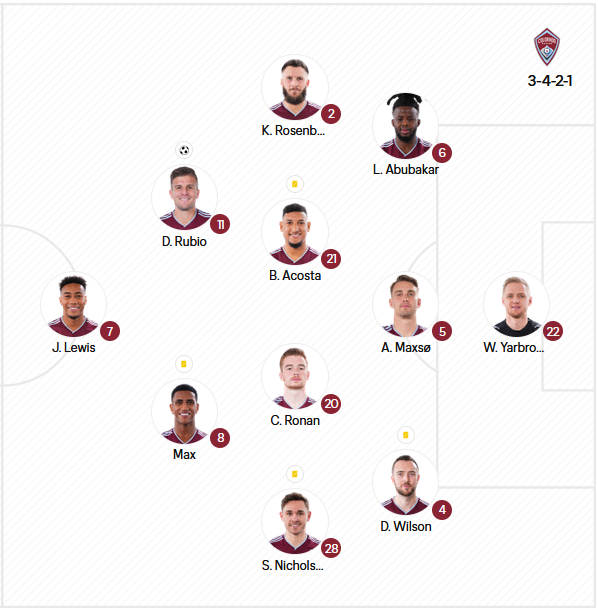
Colorado is sound defensively. They got hammered in the opening game at Seattle by a score of 4-0, but since then haven’t allowed more than 2 goals in a game. In fact, of their 7 games, they’ve allowed 1 goal or fewer 5 times, including 2 shutouts (one over LAFC, which is an impressive feat).
That defensive stability comes from the fact that they’ve started the same goalkeeper (William Yarbrough) and mostly the same 3 CBs–Lalas Abubakar, Andreas Maxsø, and Danny Wilson–the entire season. Abubakar and Maxsø have started all 7 games, while Wilson has appeared in 6 and started 5, including the last 3.
Wingbacks Keegan Rosenberry and Sam Nicholson have both started 6 games, with Nicholson appearing in all 7. Midfielder Connor Ronan has also started all 7 games.
Over the past 3 games, the front 3 has also been relatively unchanged with Jonathan Lewis and Max starting all 3 of the previous games and Diego Rubio starting 2/3.
Other players like Cole Bassett (5 starts), Darren Yapi (6 apps, 4 starts), Bryan Acosta (4 starts), and Michael Barrios (7 apps, 3 starts) have all seen consistent playing time. In all, this is a team that has a pretty clearly defined starting 11, where the most changes come in the attack. It could explain their underperformance on goals but also helps explain their defensive stoutness.
Like Real Salt Lake who we just saw, Colorado only has 1 Designated Player: Maxsø
Injury
According to the MLS Availability Report, the Rapids were missing 2 players last week: defender Moise Bombito (left knee) and midfielder Jack Price (Achilles). Price will be a big miss for Colorado. The veteran, who also serves as Colorado’s captain, tore his Achilles on 3/20/23, so he’ll miss the entire season.
Midfielders Cole Bassett (left hamstring) and Braian Galvan (groin) were listed as questionable and neither made the bench.
Of note, Maxsø was forced off last week due to an injury. It’s unclear what his status for our matchup is. He would be a miss for them.
Diego Rubio (Forward, CAM)
Rubio began the year injured, which led to him missing the first few games. He’s recently come back into the side, appearing in 3 games and starting 2. He has one of Colorado’s 3 goals.
Rubio is coming off a career year last year. He’s in his 5th season with Colorado and had 16 goals (4 PKs) and 5 assists last year in 30 appearances (28 starts). This was double the number of goals he had over the previous 2 seasons (8 goals in 42 appearances over the 2020 and 2021 seasons). His first season with Colorado saw him get 11 goals and 4 assists in 26 appearances.
So who is he? To be honest, I’m not sure. Part of this is: how do you define him positionally? Colorado lists him as a forward and FBref has him as a “FW, MF.” In 2021, his percentiles are only compared to other MLS forwards, but in 2022, you can compare him to forwards, CAMs/wingers, or midfielders.
In terms of goalscoring, if he’s a forward, those 2 years (2020, 2021) are concerning. If he’s a CAM, they’re fine. If he’s a forward, last year was good! If he’s a CAM, last year was amazing! His heatmaps don’t help.
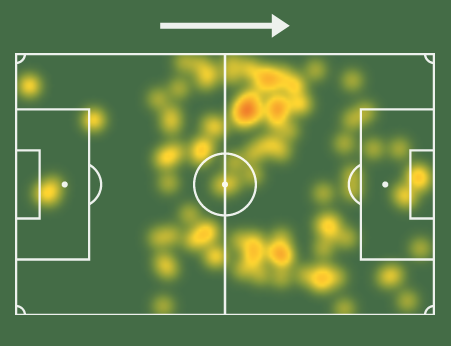
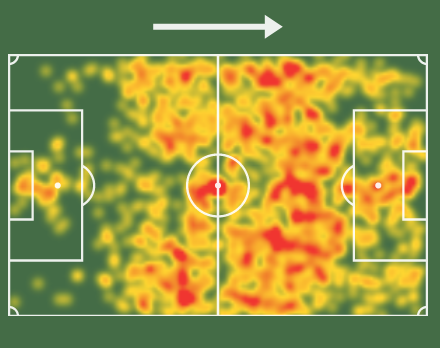
These are definitely not the maps of a forward (and his maps are pretty consistent throughout his years). I’m inclined to view him as a CAM, which makes his goal returns excellent, even in the “down” years.
As a CAM, he’s not a great passer. Compared with the “Men’s Next 8” CAMs, his passing is average. He is decent in long passing (70th percentile for long pass completion %) and he’s trying ambitious passes (77th percentile for passes into the final third, 84th percentile for passes into the penalty area, and 79th percentile for progressive passes). And this leads to him shining with goal and shot creation.
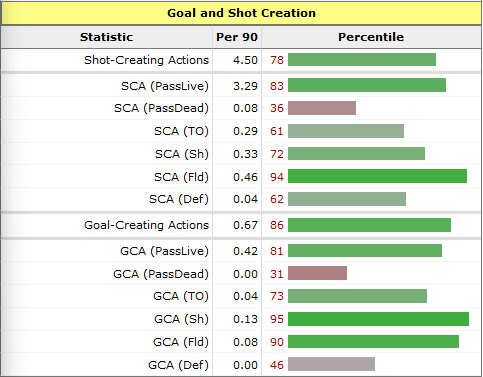
These aren’t the best we’ve ever seen, but they do show a player that will consistently cause issues for defenders.
Darren Yapi (Forward)
I’m not sure we should expect Yapi to start, but he’s an interesting and talented young player. He has made 6 appearances this year with 4 starts but hasn’t started a game since 3/18.
Yapi is only 18 and last year only got into 11 games (1 start). He didn’t have a goal or an assist. This year, he’s only gotten 1 assist. Normally, this wouldn’t read like that interesting of a player, however, I think he is for two reasons. First, I always enjoy young players who break into teams, even if it is limited minutes. Second, in all his appearances last year he had 1.9 90s. So far this year, he’s already at 4.6 90s, meaning, Colorado clearly see him as ready to be part of the first team in a major way.
Further, Colorado has only scored 3 goals all year, so the fact that he hasn’t scored doesn’t mean much to me. What does mean a lot is that he’s the team leader in xG at 1.2 (along with 0.7 xGA).
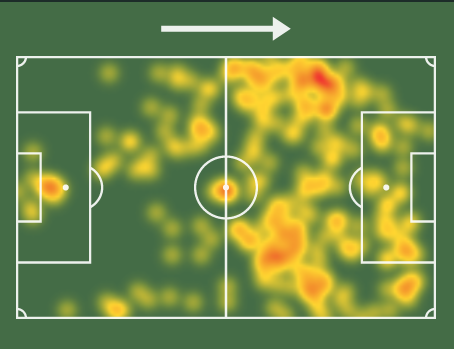
Positionally, he’s all over the place on the front line, but on the right he’s getting further toward the end line by a lot. Due to his overall lack of playing time, I don’t think the percentile ranks are hugely relevant yet. With that said, he does appear to take on people readily (5.56 take-ons attempted/90) and has success with it (2.32 successful take-ons/90). He’s someone who also appears to carry the ball well (20.38 carries/90, 40.29 progressive carry yards/90, 1.08 carries into the penalty area/90).
Even if he doesn’t start, it seems likely he’ll come off the bench when Charlotte has tired legs. He looks like a real prospect.
Max (CAM/winger)
Brazilian players do names right. Max. Hulk. Fred (even if it is pronounced as “Fredj”).
Max is a 22-year-old winger in his 2nd season with Colorado. Last year he got into 28 games (9 starts), but didn’t score and only had 1 assist. So far this year, he’s gotten into 6 games (4 starts) and still doesn’t have a goal.
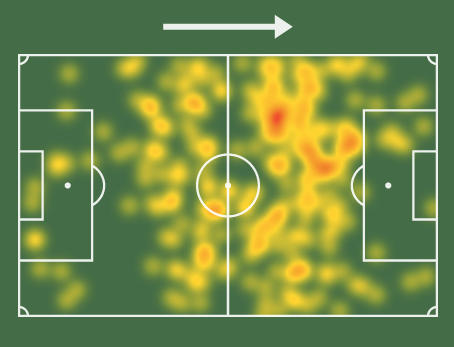
He favors the left side of the pitch and doesn’t really get into the penalty area all that much. Considering the positions that Rubio gets into, that’s not necessarily a bad thing.
FBref allows him to be compared to midfielders or CAMs/wingers. Based on his heatmap and his position in the starting lineups, I’m going to consider him a CAM/winger.
The shooting numbers are terrible, as you might expect from someone who has yet to score a goal in MLS. The passing and possession numbers, though, are good.
- 89th percentile for medium passes completed (87th percentile for medium passes attempted)
- 94th percentile for long passes completed (82nd percentile for long passes attempted)
- 92nd percentile for passes into the final third
- 86th percentile for progressive passes
- 99th percentile for successful take-on % (though only 25th percentile for take-ons attempted)
- 96the percentile for times tackled during a take-on
- 94th percentile for dispossessed
He’s not perfect in these categories, obviously. His short passing is oddly poor and he doesn’t carry the ball much or well. However, he is still young and many of these numbers point to someone who has serious attacking potential.
William Yarbrough (GK)
Yarbrough is now in his 4th season with Colorado and has been their #1 since his arrival. Over his 3+ seasons, he’s made 88 starts. He’s been…fine? As with any goalkeeper, the numbers are dependent on a number of factors, but his numbers have been pretty in consistent.
- 2020: 14 starts, 1.43 GA90, 73.4% save%, 0.0 PSxG+/-
- 2021: 33 starts, 0.97 GA90, 77.4% save%, +1.3 PSxG+/-
- 2022: 34 starts, 1.61 GA90, 70.6% save%, -4.8 PSxG+/-
- 2023: 7 starts, 1.14 GA90, 78.1% save%, +3.1 PSxG+/-
His best season was in 2021 when Colorado finished 1st in the Western Conference and made the conference semifinals. In 2020, they finished 8th in the West, and in 2022 they finished 10th in the West.
I’m not fully confident in making the argument that his performance is a result of the overall team, however, I do think there’s a real argument to be made that he’s not lifting his team. Bad teams allow more goals, so you would expect a goalkeeper to have worse numbers. However, good goalkeepers also help bad teams and I’m not sure I see evidence of that happening either.
The PSxG+/- numbers point to a player who, even in his best year, is just slightly above average, while in bad years (2022) is very bad. His number so far this year is excellent, but he doesn’t have a history of keeping it up. Maybe you could argue that he’s still prime-ish age for a goalkeeper (34), so maybe he’s going to have a career year? I tend to trust history more. I imagine that his PSxG+/- will come down a bit.
Overall, Yarbrough looks like an average keeper to me. In general, if the team is good, he’ll probably play well enough for you to win. If the team is bad, he’ll not do much to help you.
Conclusion
We’re in “must-win” territory now. A home game against a struggling team should be cause for optimism. Like most of you, I don’t feel very optimistic right now.
Colorado has some good players, but there’s not one that jumps out as a “danger man.” Players like Rubio, Yapi, and Max can cause problems to be sure, as can players like Ronan and Abubaker (both of whom I didn’t highlight, but are good players in their own right). If this were late 2022 Charlotte, I’d be exceedingly confident of a win. Right now, I’m wondering if we’ll be able to score.
The biggest question for me is what to do with our midfield. In an ideal world, I’d like to try a Karol-Westy-DJ/Bronico midfield. Swiderski and Bender lacked defensive stability against RSL and I just don’t think you can play both of them in the midfield.
This is what I’m hoping to see on Saturday.
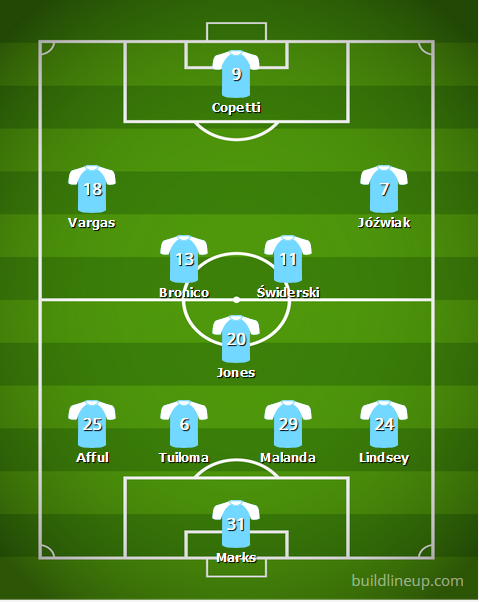
Now, this lineup is based on what I think our availability will look like and, more importantly, what I think is reasonable to expect from Lattanzio. If Westwood is fit, I’d put him in for Bronico. Regardless, I think that this lineup gets the majority of our talent into the side (with Nuno being the glaring exception), while also providing us with the best chance at scoring.
In possession, I’d like to see us set up our midfield/backline with one of these two options:
- Have DJ drop between the CBs to give us 3 at the back, if we’re going to push Afful and Lindsey into the middle.
- Shift Tuiloma, Malanda, and Lindsey left into a back 3 with Afful and Jones forming a double pivot in the midfield.
My preference is option 2 as I’m not convinced Jaylin has the passing ability I want in the center of the pitch. Don’t get me wrong, he can make some fine passes, but they’re usually not build-up passes.
Vargas and Jóźwiak need to continue to provide width, but I am worried about Vargas’ positioning last game. It was something I noted in-game.
It’s further emphasized by his heatmap from that game:
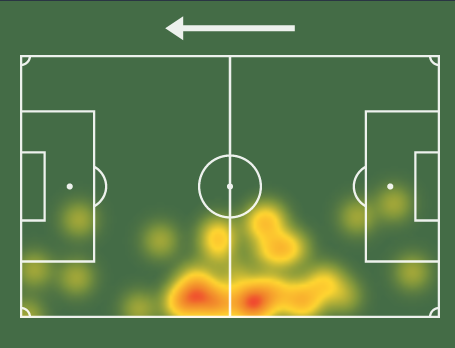
Kerwin Vargas has no business being that far away from the opposing goal. It’s a waste of his talents. Compare the above map to his previous 3 games (ORL, RBNY, TFC):
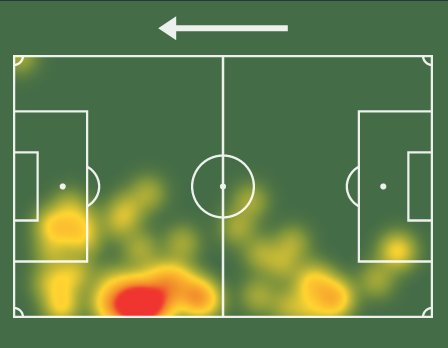
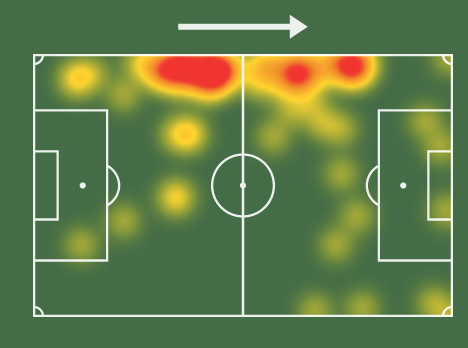
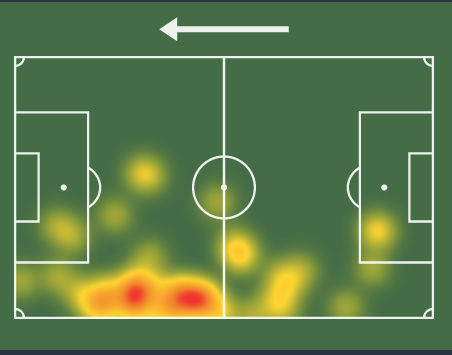
Ideally, I want Vargas’ maps to look like the Orlando and Toronto games all the time.
Let’s hope some issues have been ironed out this week, though I’m not confident. This is one of the few times I’m predicting a home loss and probably the only time to a team I don’t consider elite.
Prediction: Charlotte 1 – Colorado 2
Data Notes: All heatmaps come fromSofascore.com. All percentile rankings and percentile charts come fromFBref.com. All formation graphics are fromMLSsoccer.com. Other websites used for data include transfermarkt.us,Wyscout.com, andMLSsoccer.com.
